Car Designs of the 1937 Fisher Body Craftsman’s Guild
by Ron Will
Heritage photos from 1937 provided with the compliments of General Motors.
In 1930 the contest began with boys age 11 to 19 challenged to build, paint and upholster a scale model of the symbol of Fisher Body, the elegant Napoleonic Coach. A basic kit of unfinished wood, upholstery and castings along with a detailed assembly book were all that the boys were given to build a highly detailed model. The prizes included $47,350 in cash and college scholarships, a lot of money in 1930. The lack of income in the depression provided an added incentive for young boys to build a model that would get them a college degree that otherwise would be out of reach. Thousands entered and over 1,300 finished coaches were received in 1931.
In the 1930s, car design was becoming a more important part of the incentive to purchase a particular model. In 1927 Harley Earl, a California Hollywood custom car designer for the stars, was hired by GM to design the new Cadillac LaSalle. It was a resounding success and resulted in GM Hiring Earl in 1928 to head up a new Art and Color Section, later to be called GM Styling and now called GM Design. Besides engineers, Earl saw a need to find talented car designers and sought to add car design to the Guild contest.
The coach contest continued, but in 1937 1/12 scale model car designs were finally added as a separate part of the Guild contest. The entrants only received a page of specifications and a guide book with methods of building their model. Only four door sedans were allowed in the beginning.
GM was kind enough to release many photos of those early 1937 Guild model years from their archives. We have posted a sample selection of those models.
That first year of the car design produced some remarkable models, far advanced for their time. However to judge these designs, it’s important to have a reference to the production designs of the period, like this 1936 Chevrolet and 1936 Ford, still designed with flat glass, separate headlights, separate fenders and running boards. Guild models for the 1937 contest were started in 1936.
Just as in later years, there were models of excellent design and perfect craftsmanship. Others were not far removed from the block of wood they were carved from. Nevertheless, every model completed was an accomplishment. Of the hundreds of thousands that entered, only a few percent actually finished entering a car model or coach.
Unfortunately, the war years interrupted the Guild contest after 1937. It was not re-started again until 1945. A few models were built for the 1938 Guild contest that was cancelled. We wonder how many young, gifted car designers lost the opportunity to show their skills and perhaps become top car designers during those missing years.
In later years, the Guild models were built as part of school shop classes. Modelers formed Guild Clubs to trade ideas and compare designs. At one point, the Fisher Body Craftsman’s Guild was second only to the Boy Scouts of America as one of the largest youth oriented activities.
Many models moved far beyond the stodgy designs of the 1930s and looked forward to rear engine designs and sleek aerodynamics. Many got rid of running boards and separate fenders, styling smooth body sides that would not come into popularity until the 1950s. They also predicted that exterior door hinges should disappear.
Many young boys probably lived in homes with few tools to shape their models, but they did the best they could.
Not many of those early 1937 models survive today, but here are a few.
The car design part of the Guild contest became far more popular than the coach contest. So, the coach competition was dropped in 1948. The Guild car design competition continued for 20 more years until 1968. GM was not the only benefactor in finding talented designers. Many Guildsmen were also hired by Ford, Chrysler, and even foreign car manufacturers. The influence of the Fisher Body Craftsman’s Guild is still felt far and wide with classic and distinctive car designs created by Guild car designers who are now part of automotive history.
Postscript: Both myself and Gary Smith of Deans Garage owe our car design careers to our participation in the Guild contest many years ago.

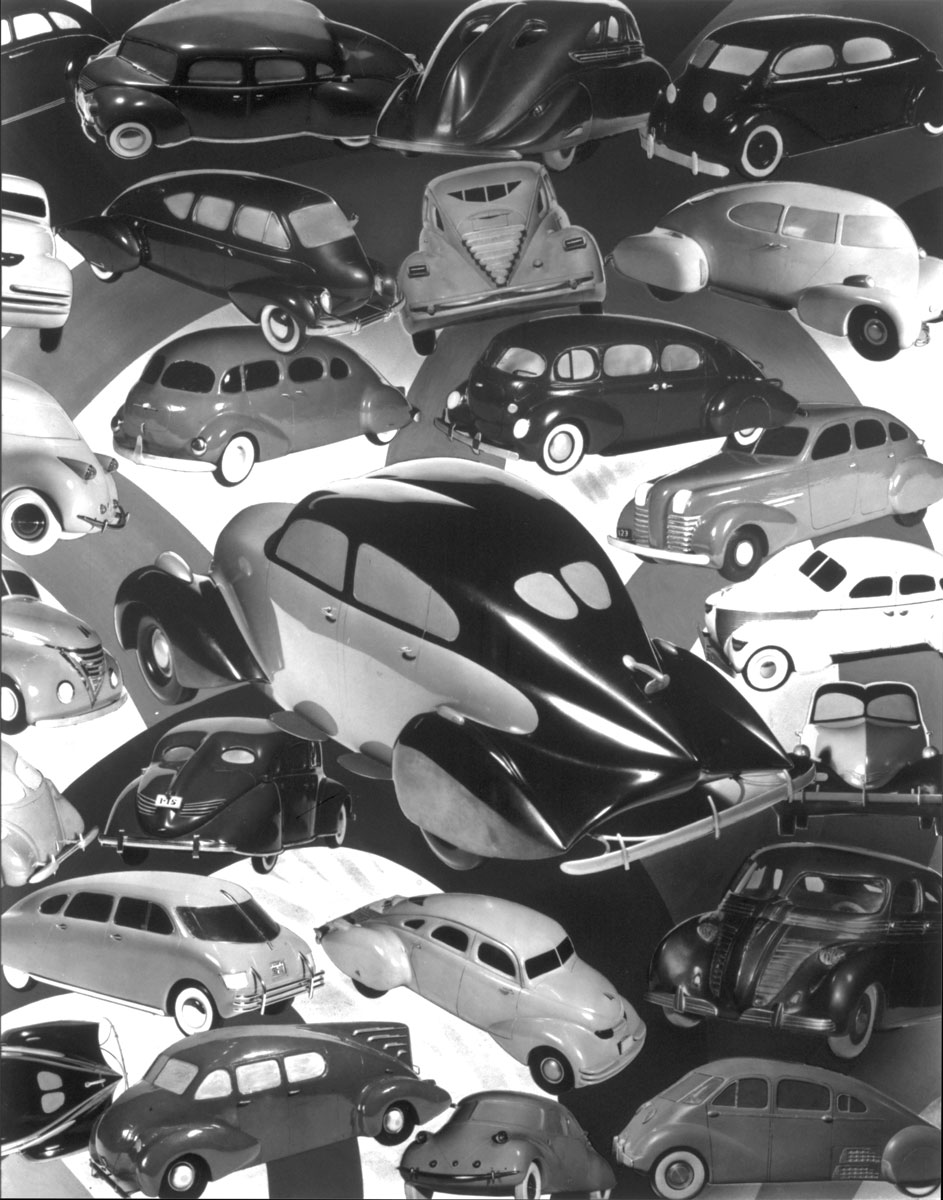
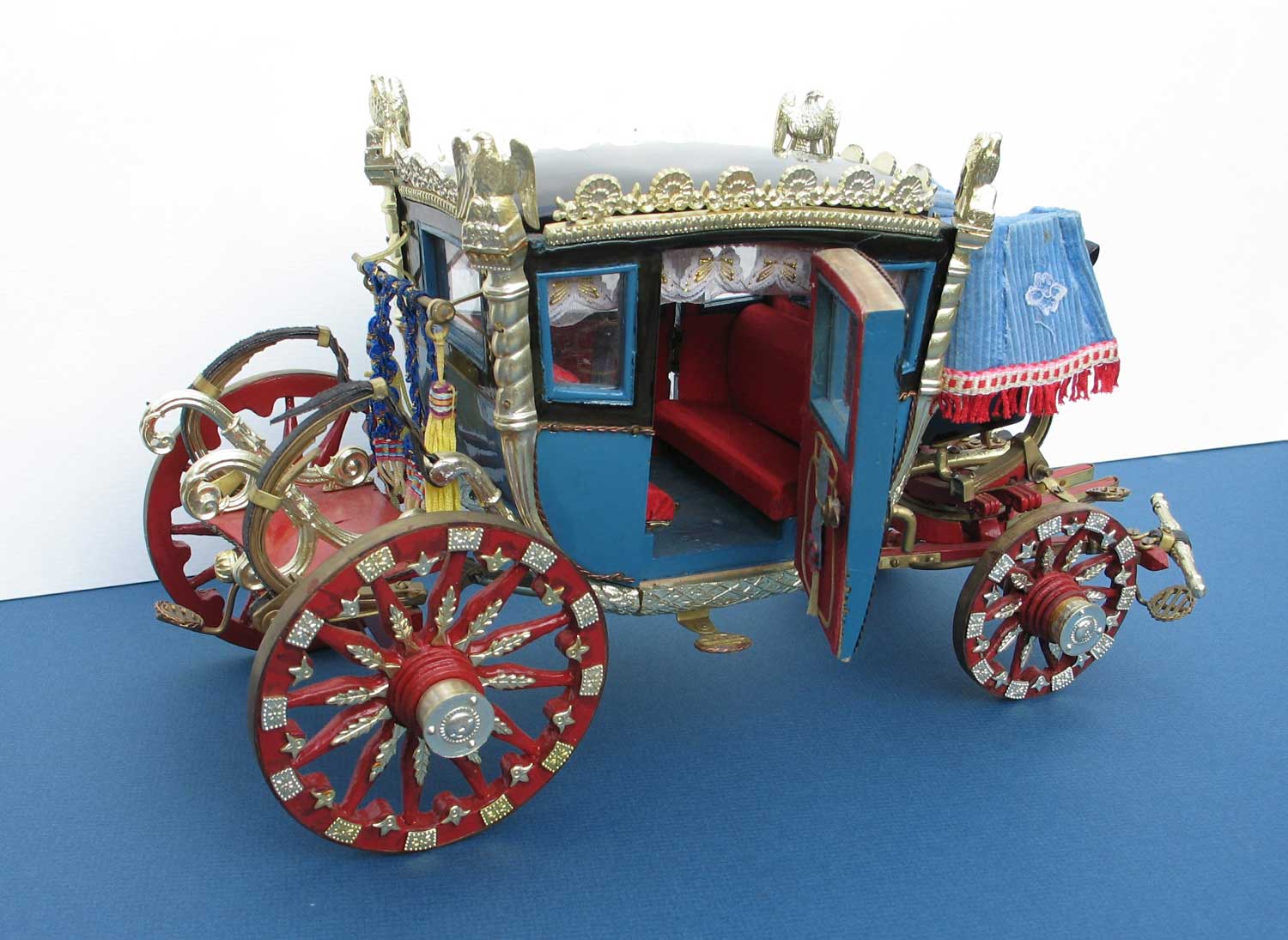
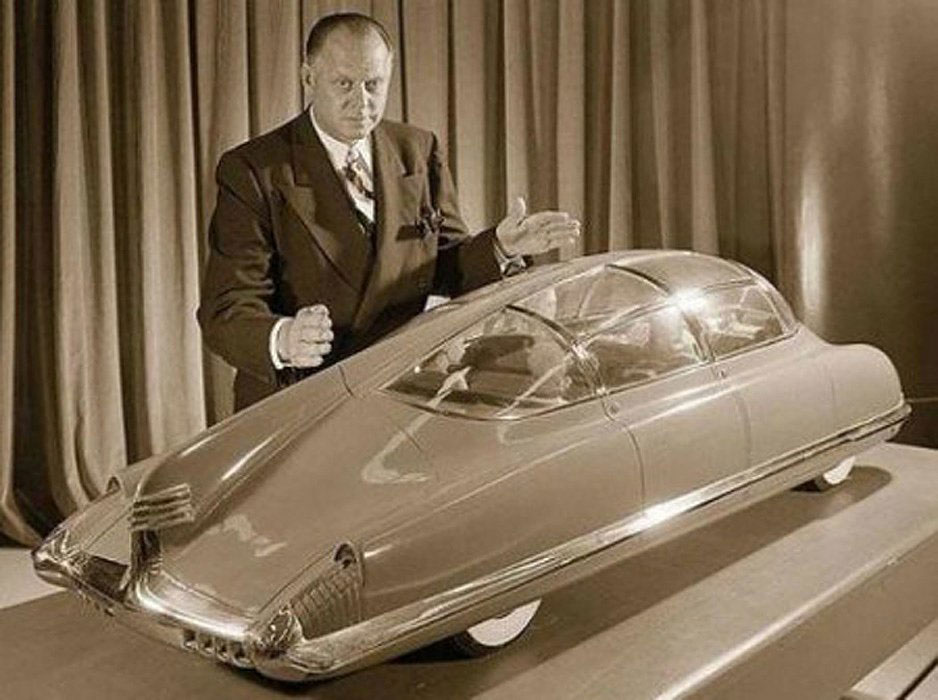
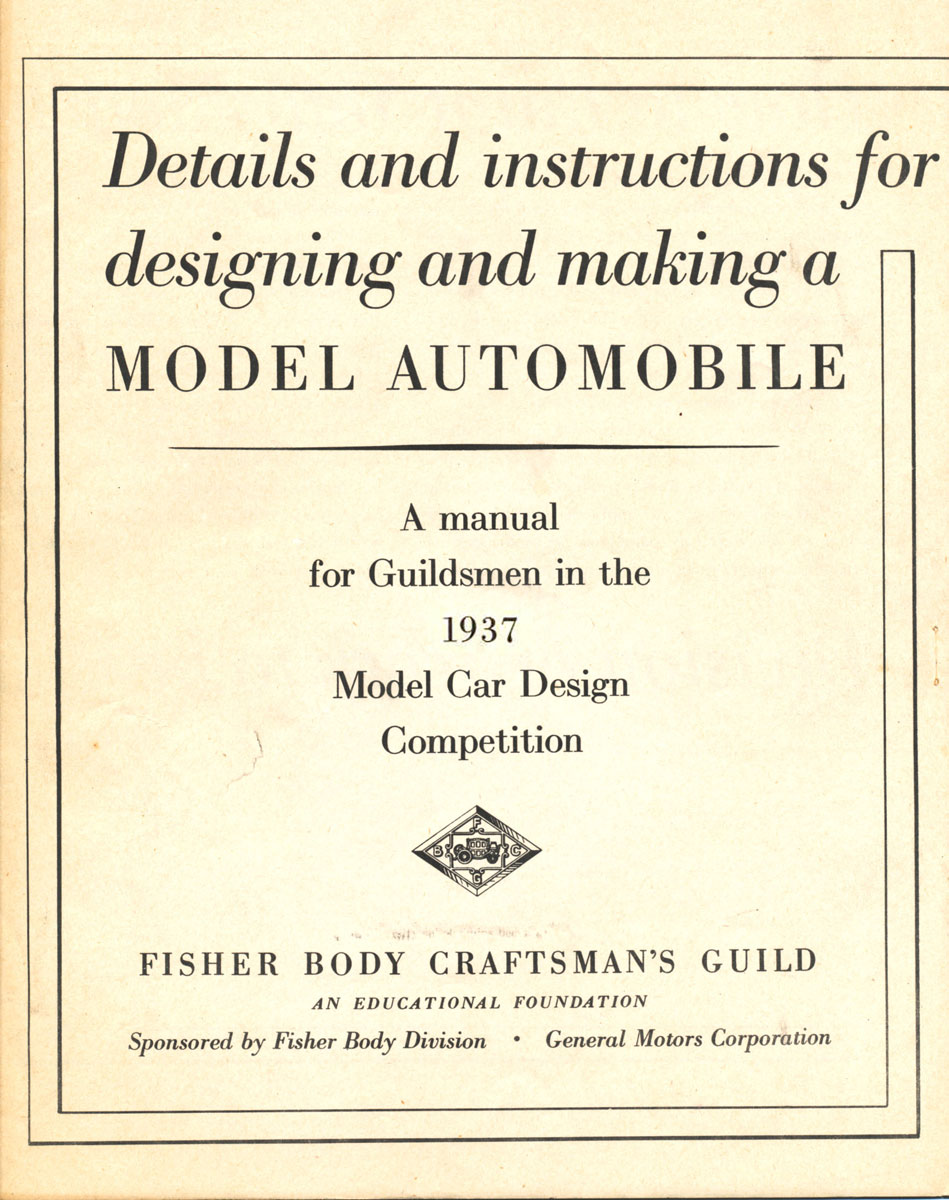
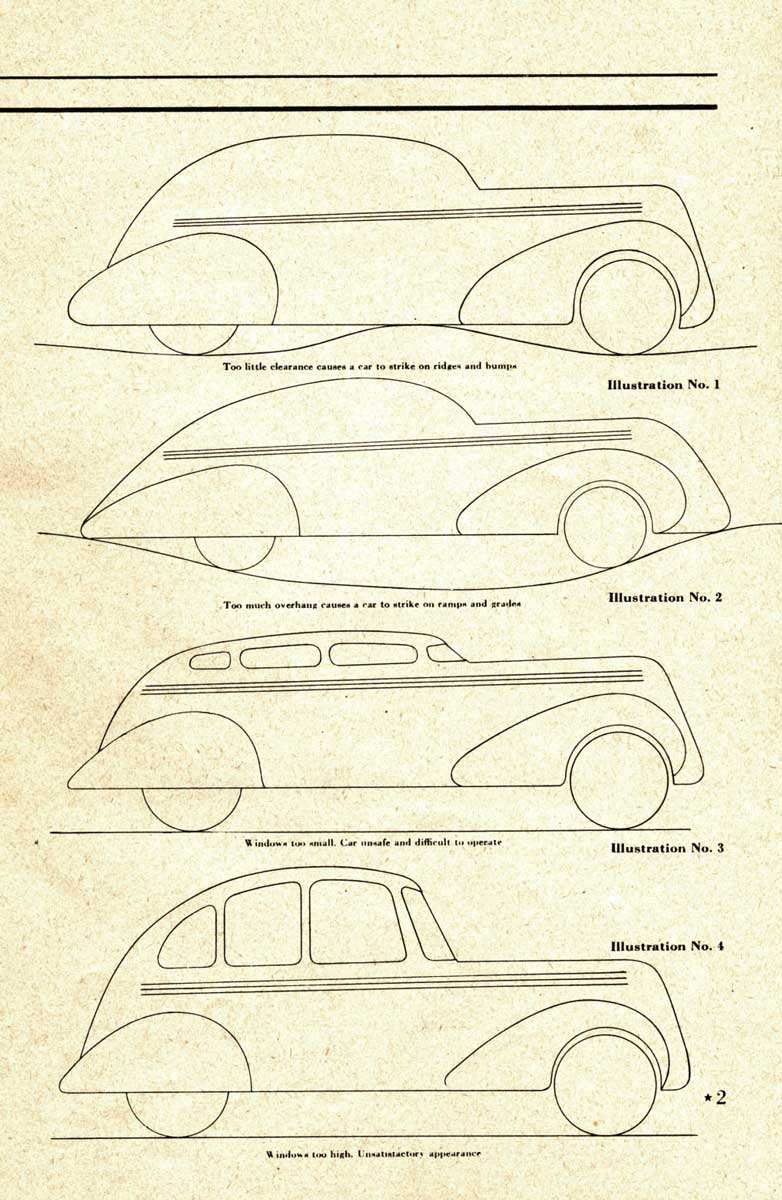
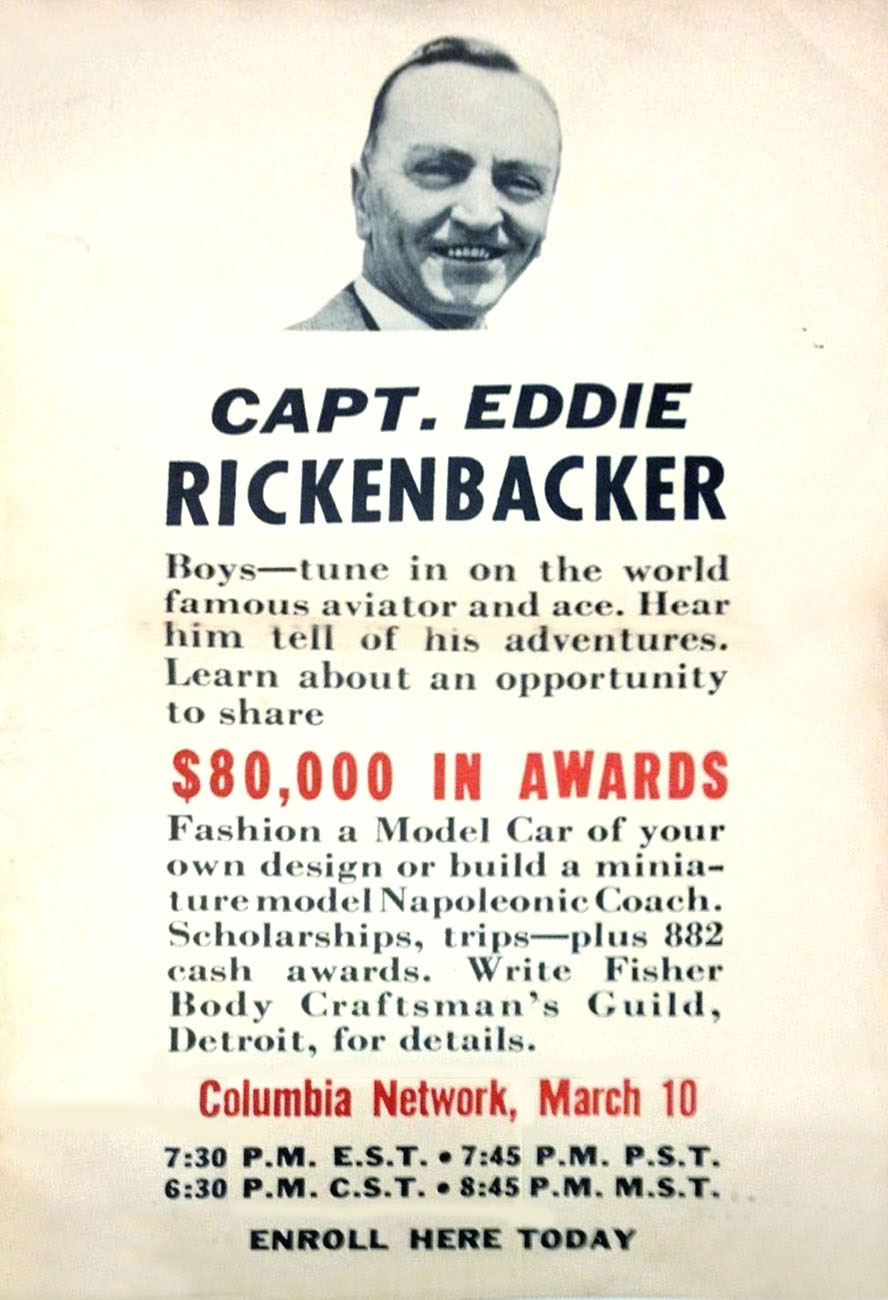
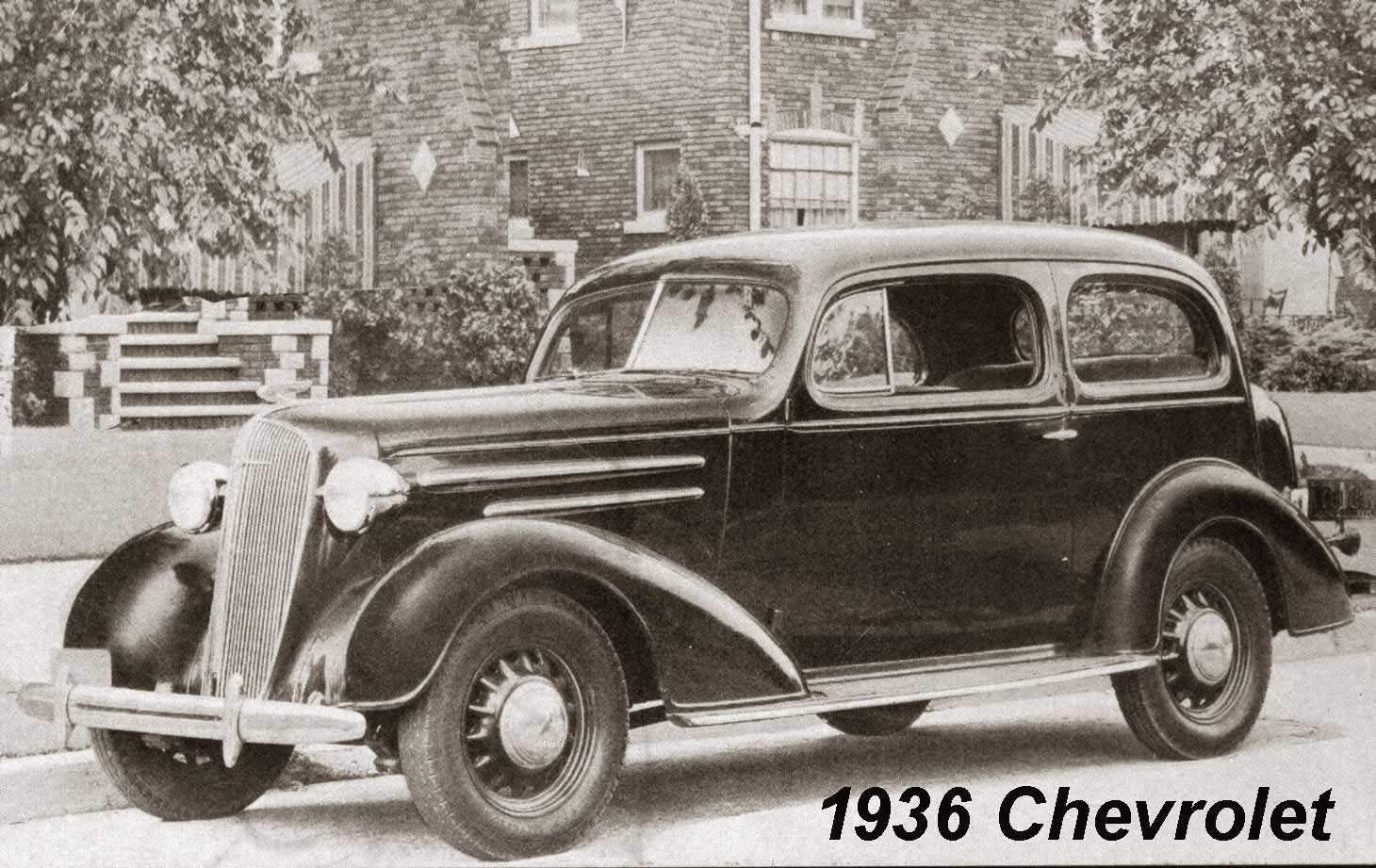
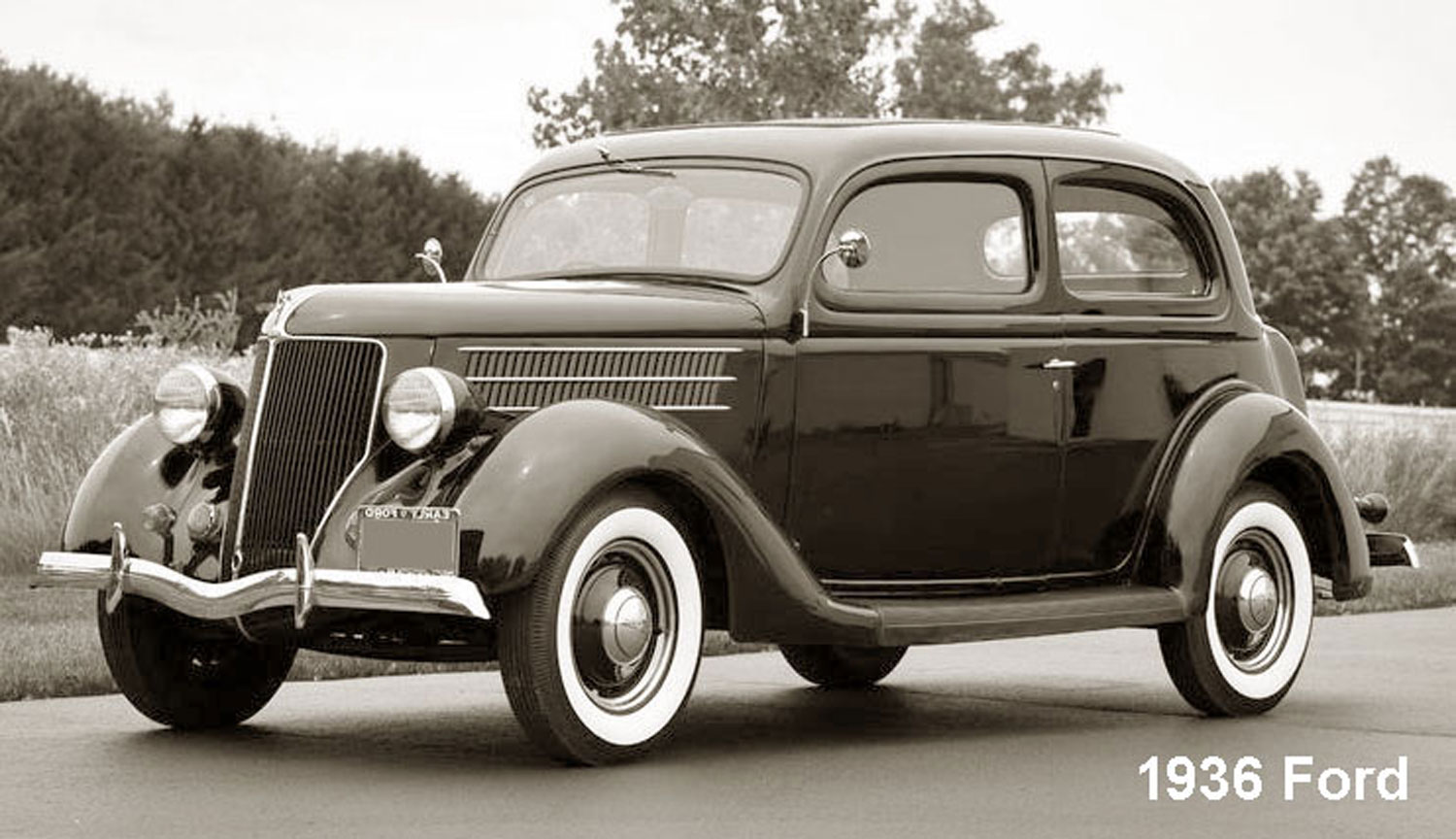
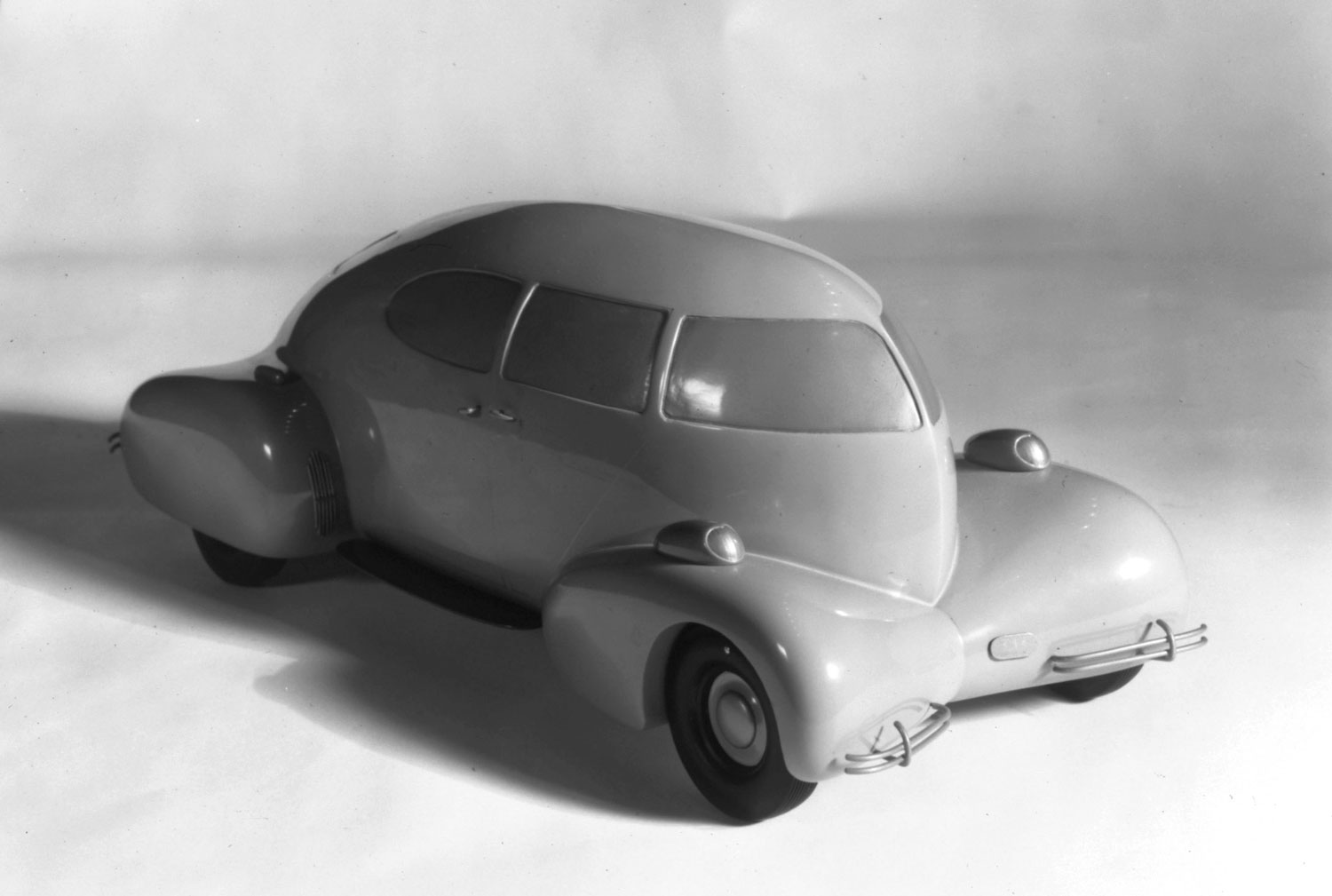
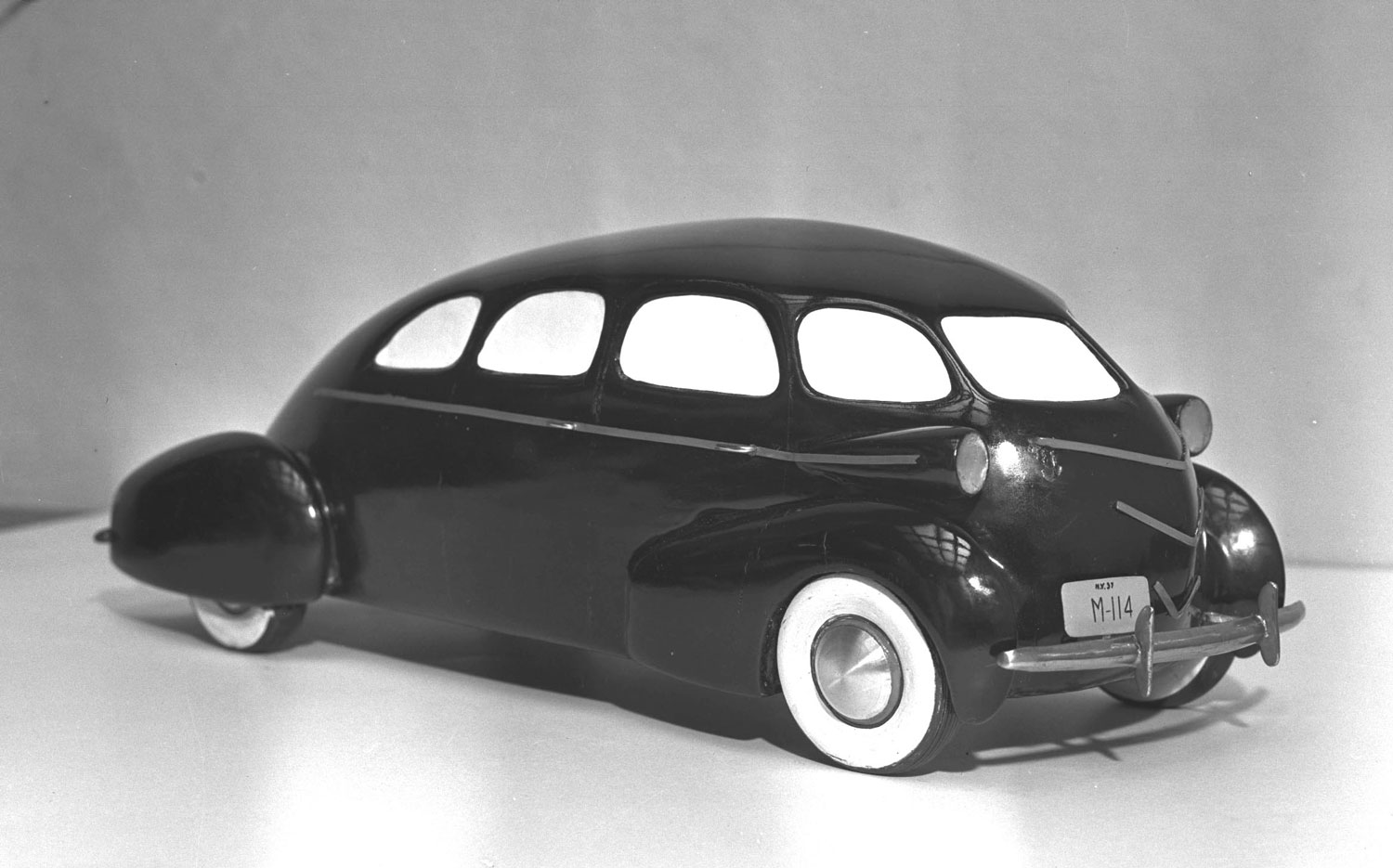
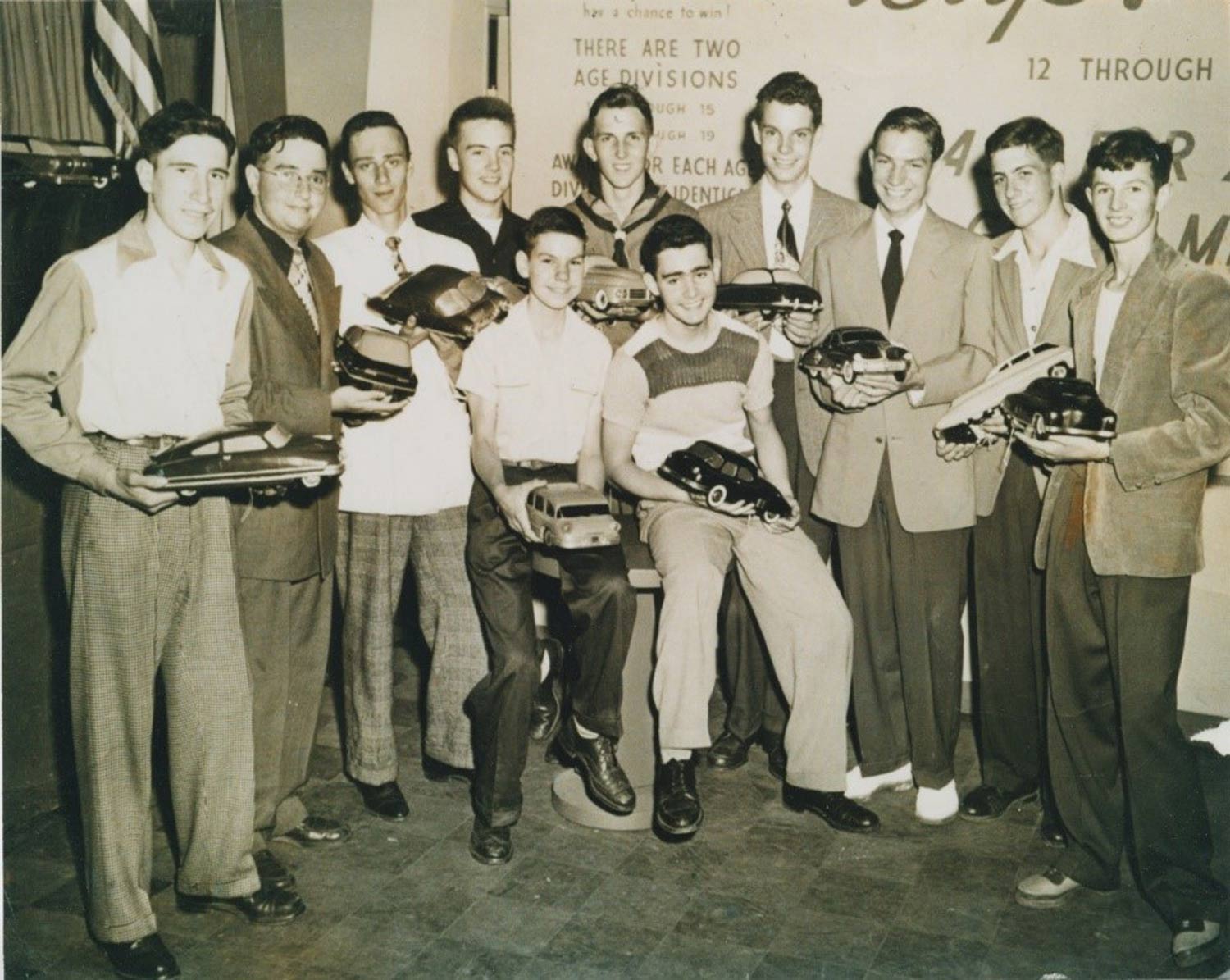
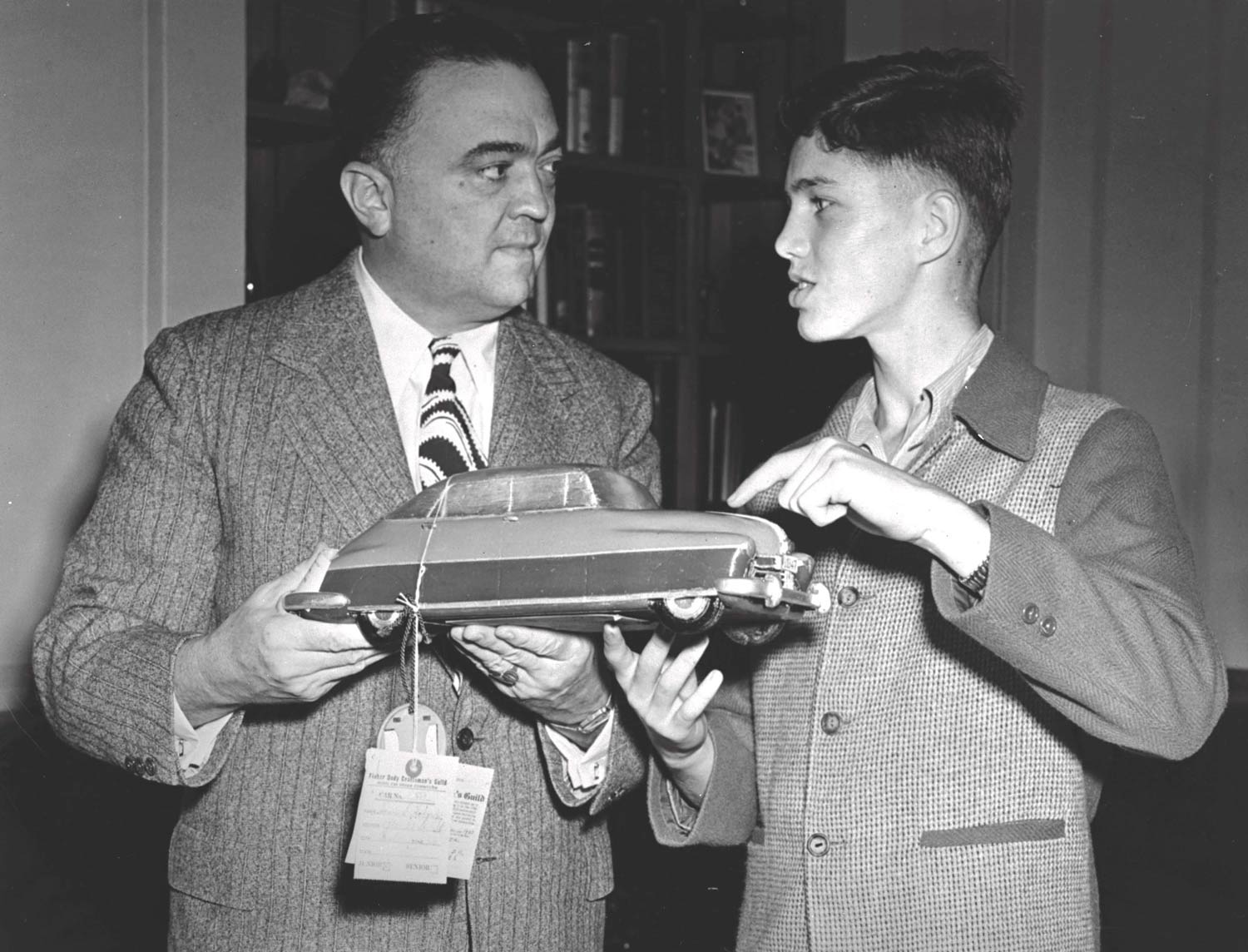
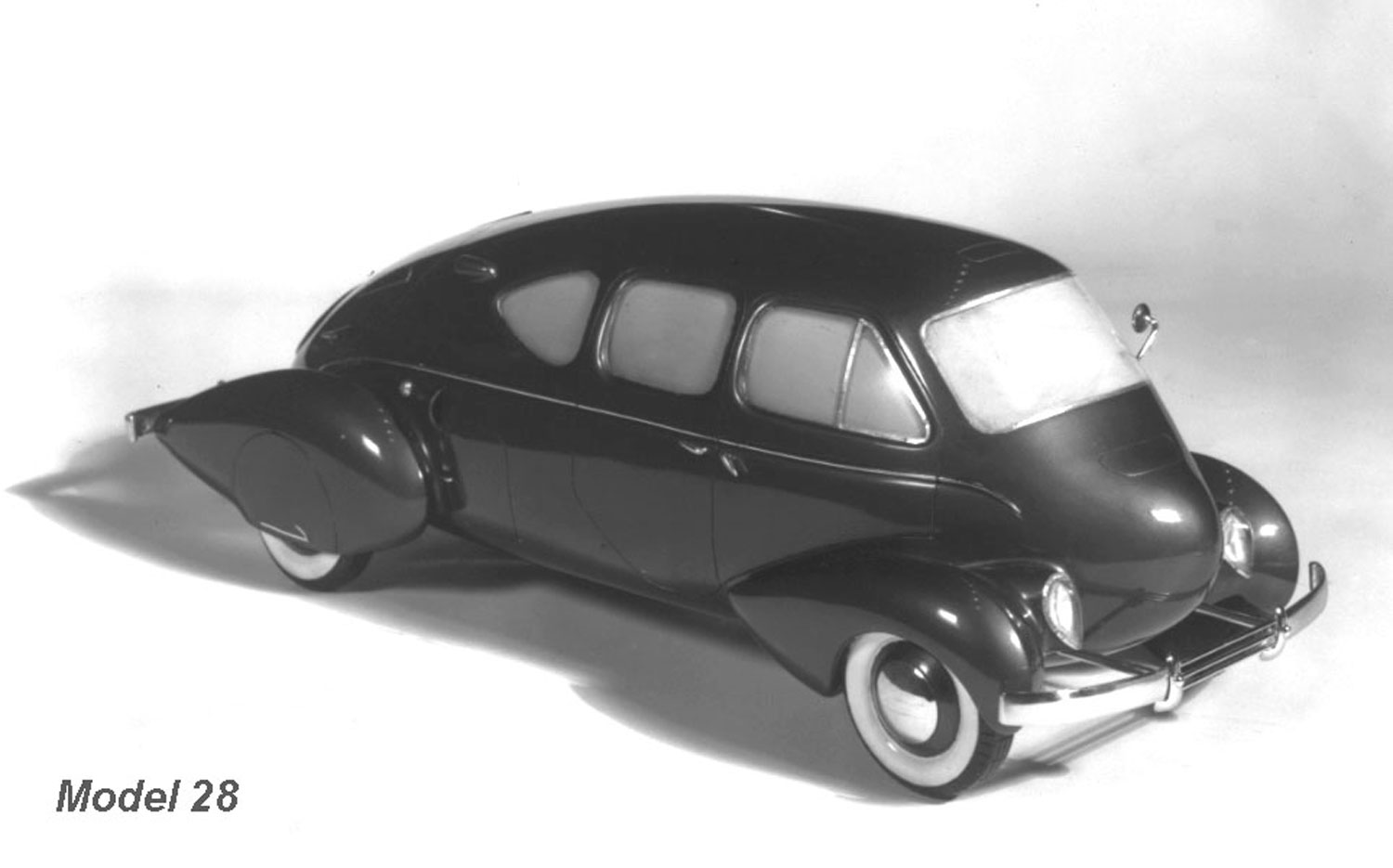
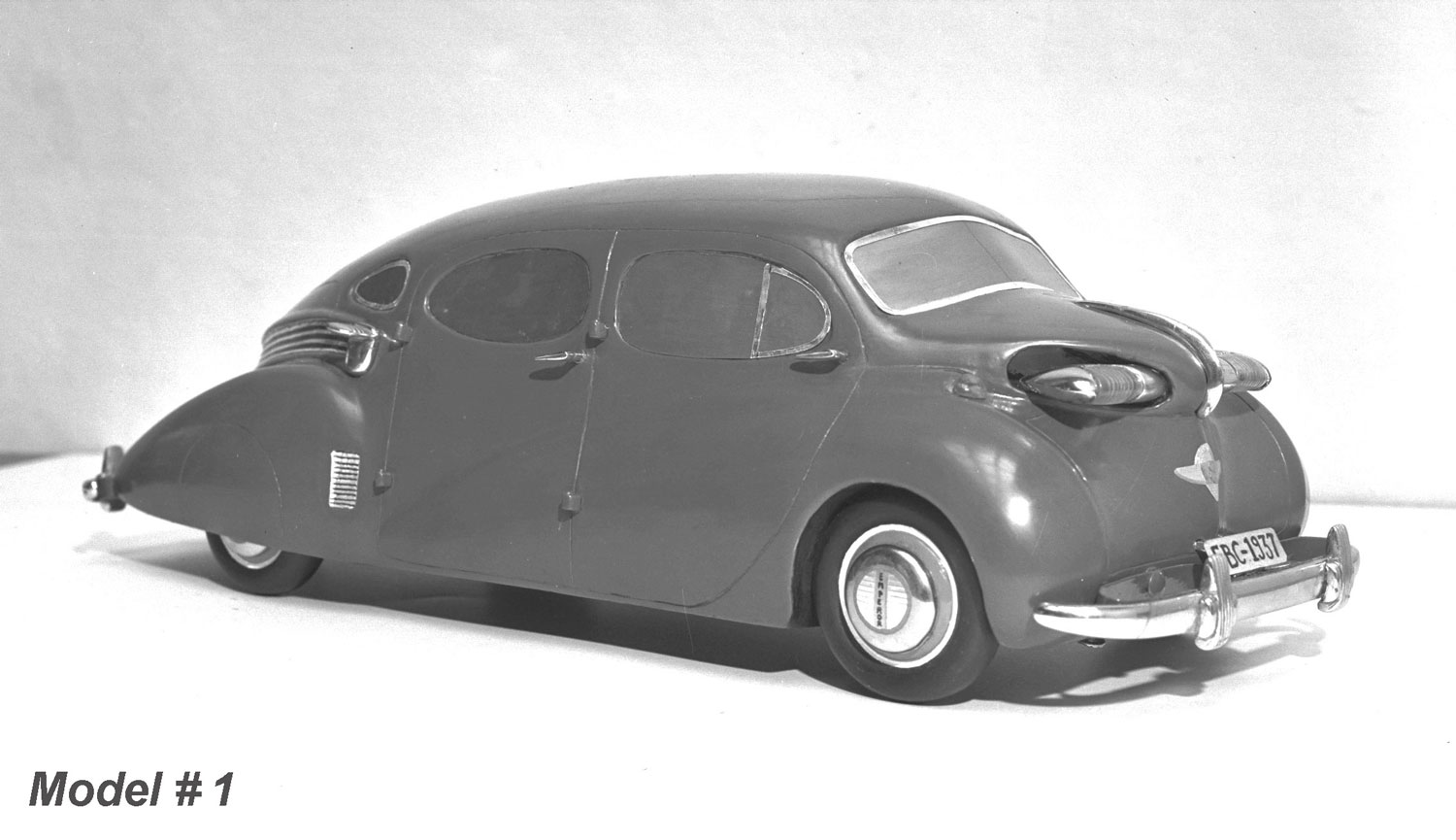
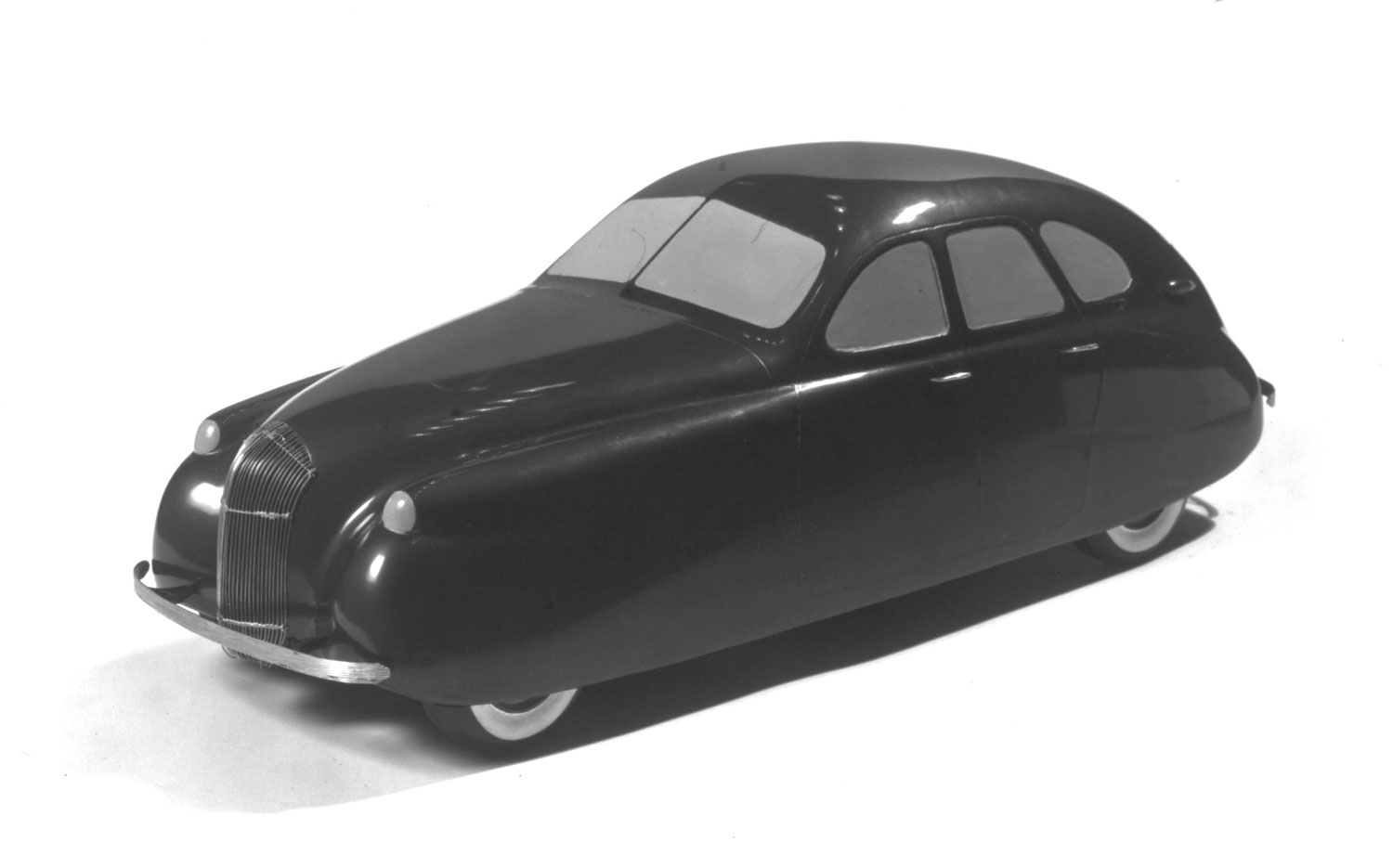
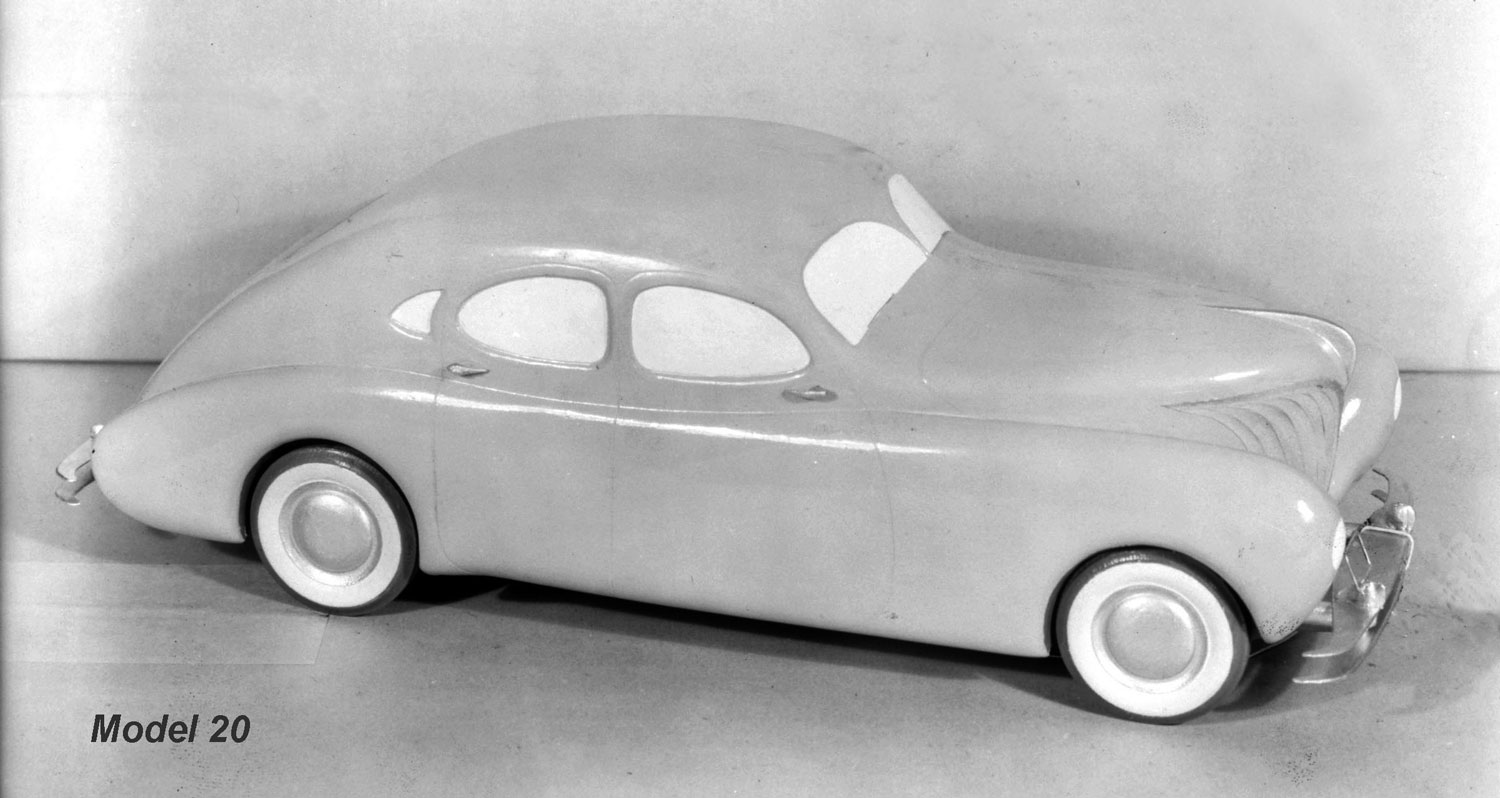
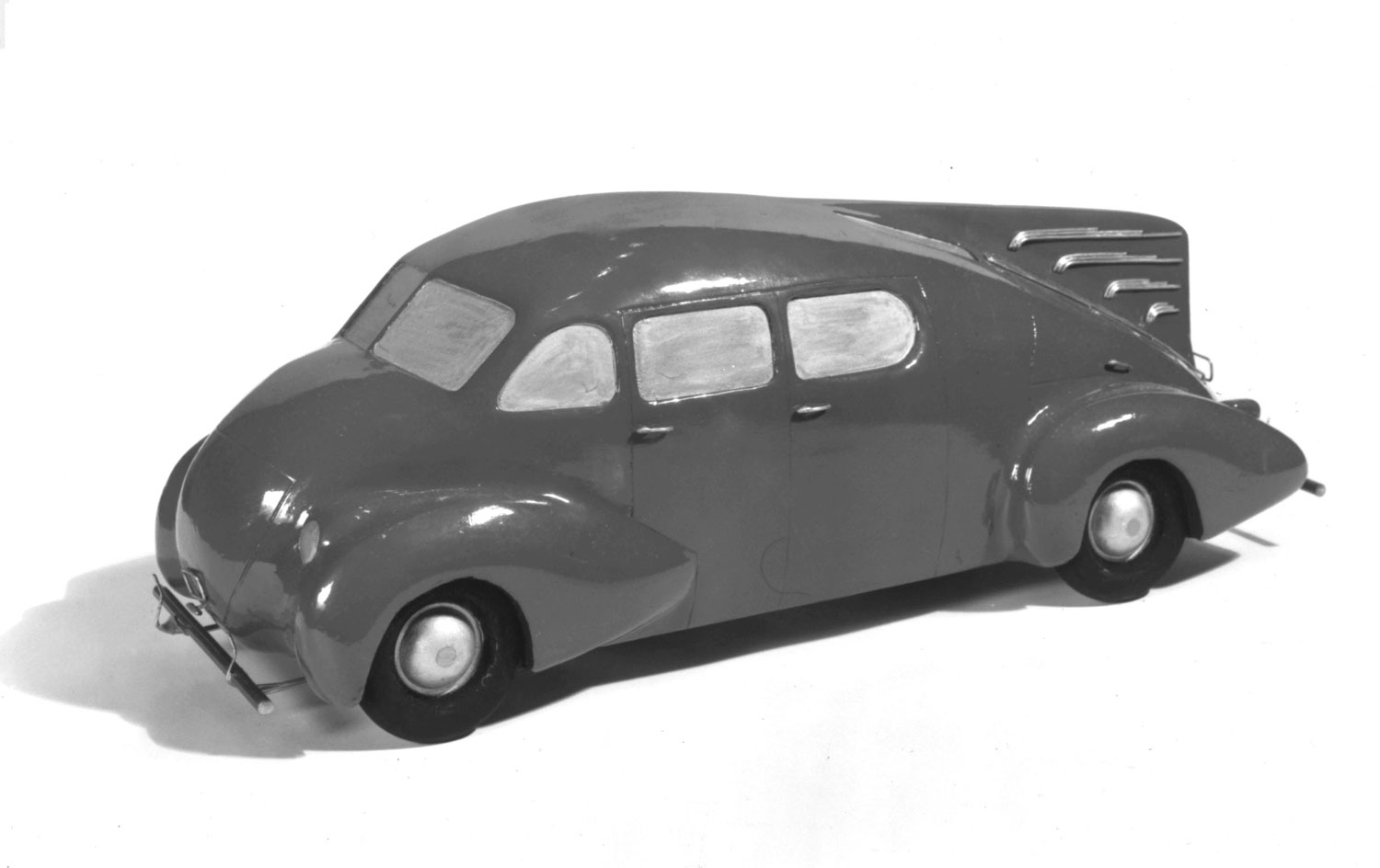
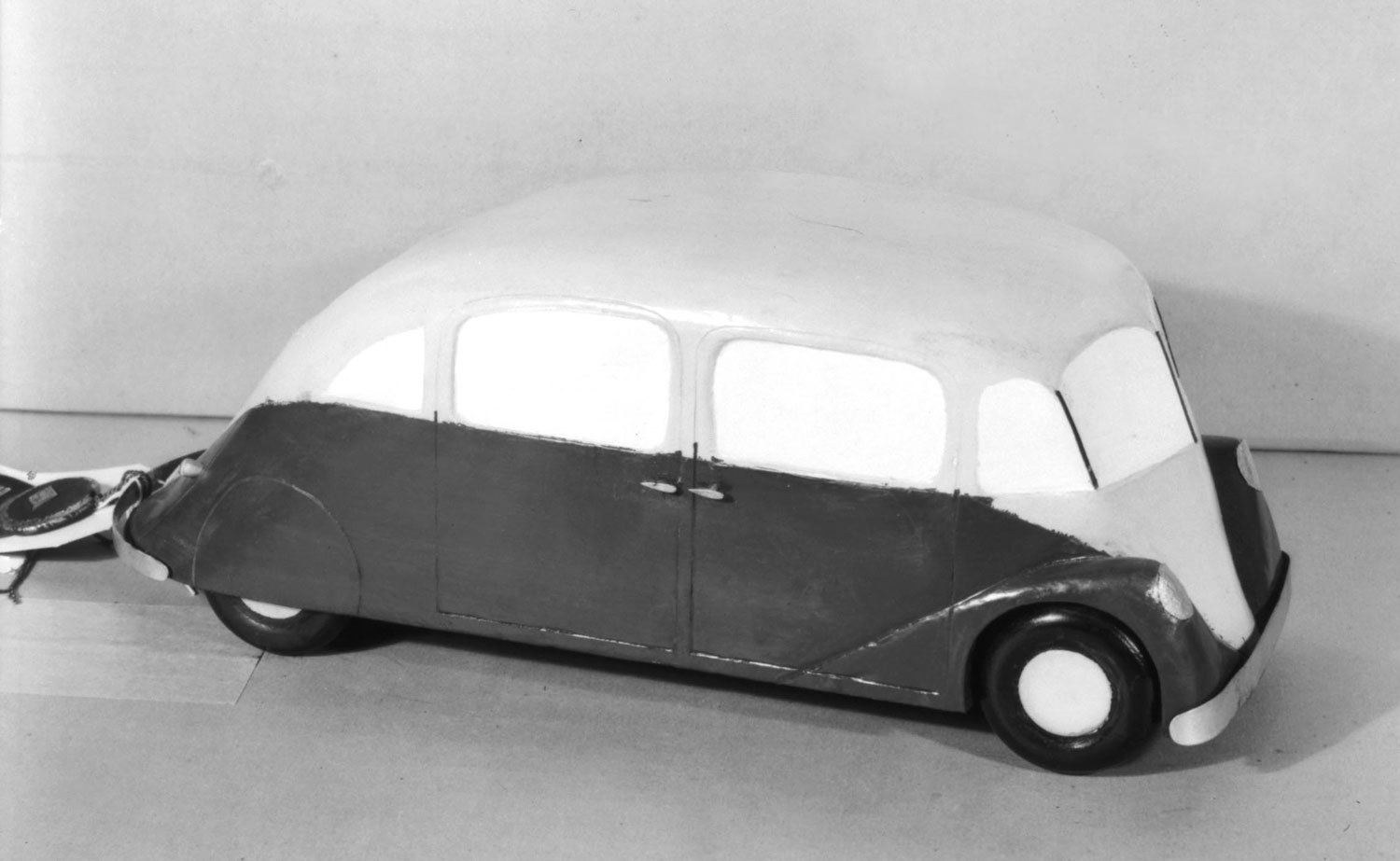
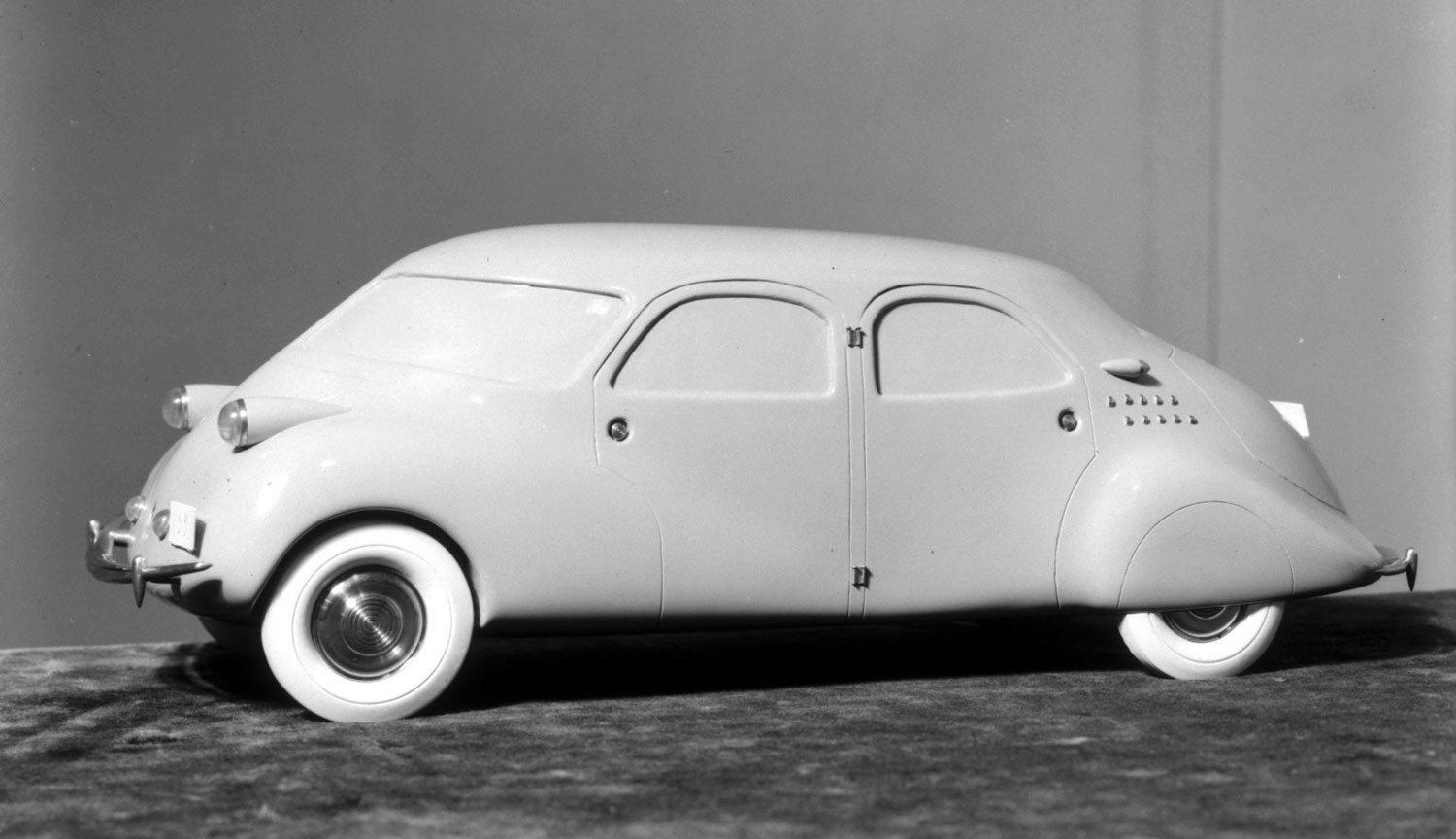
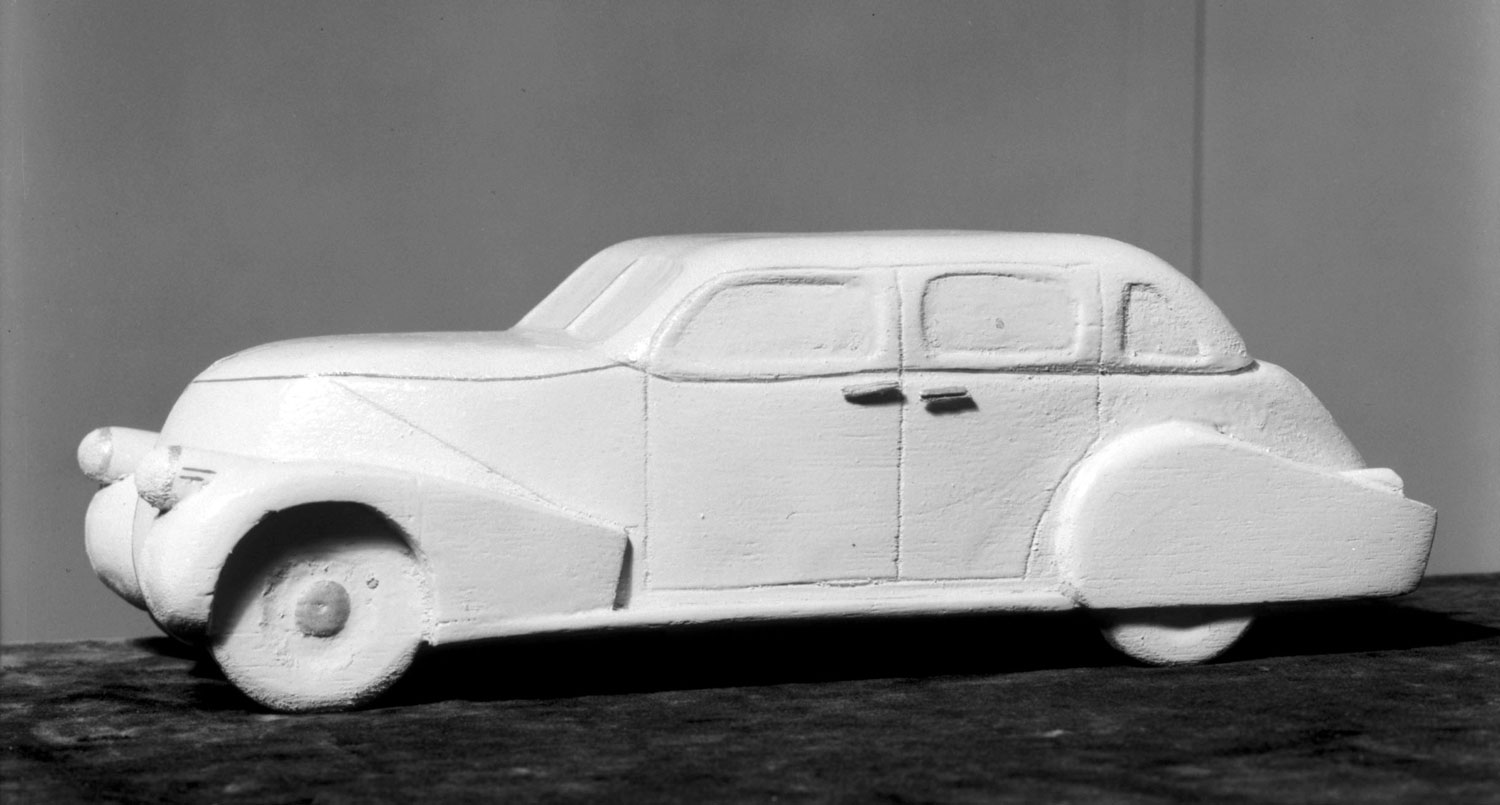
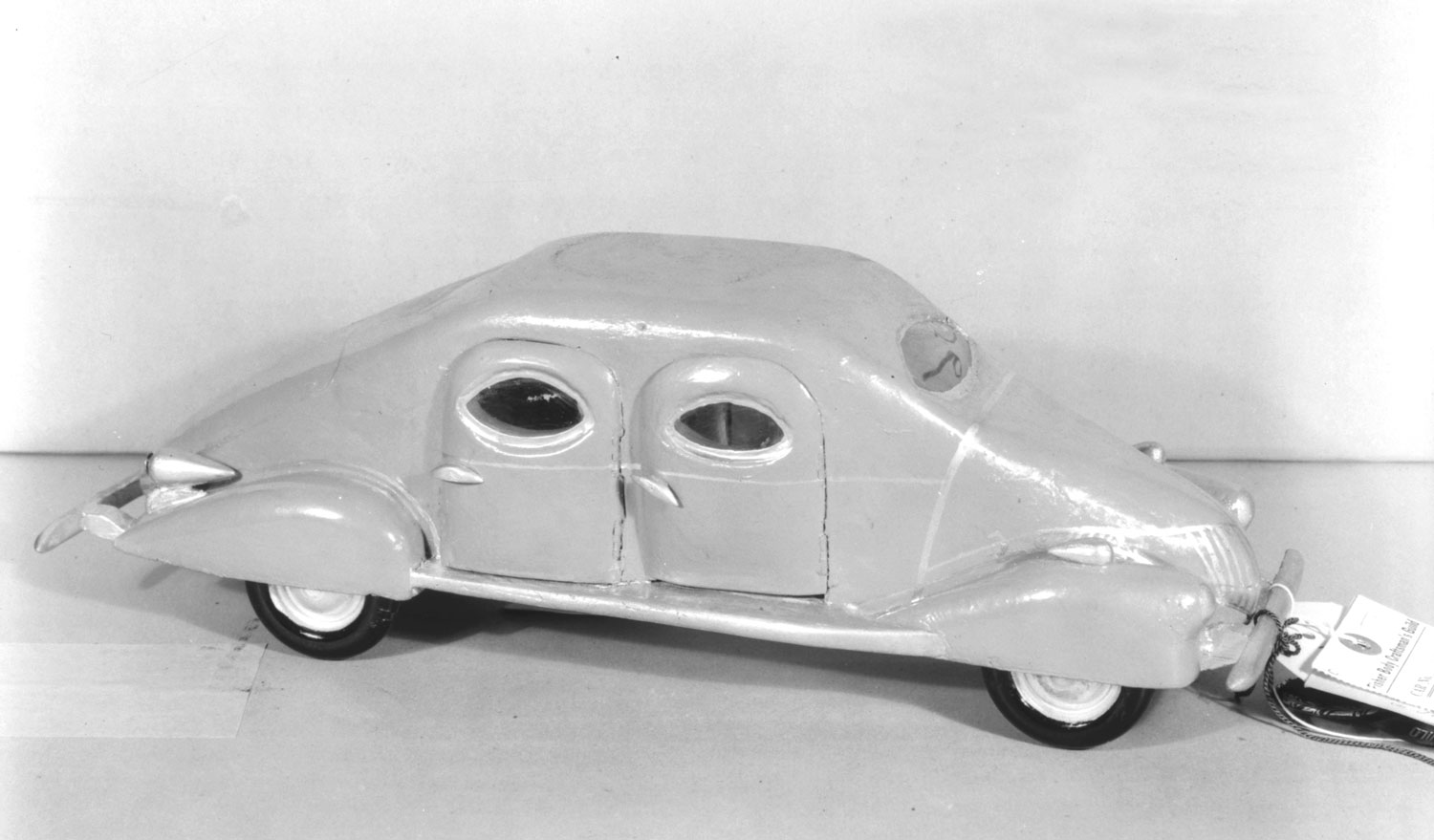
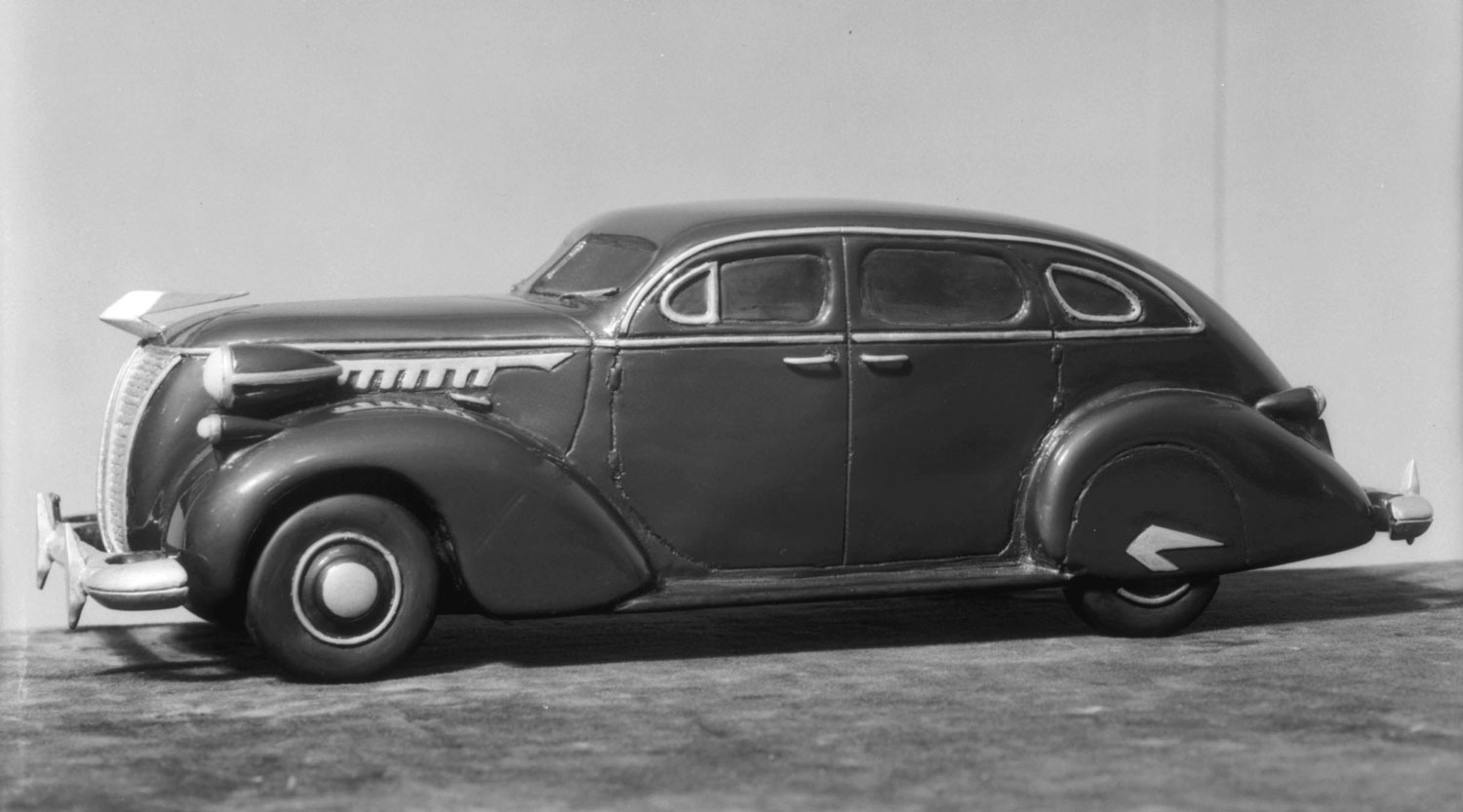
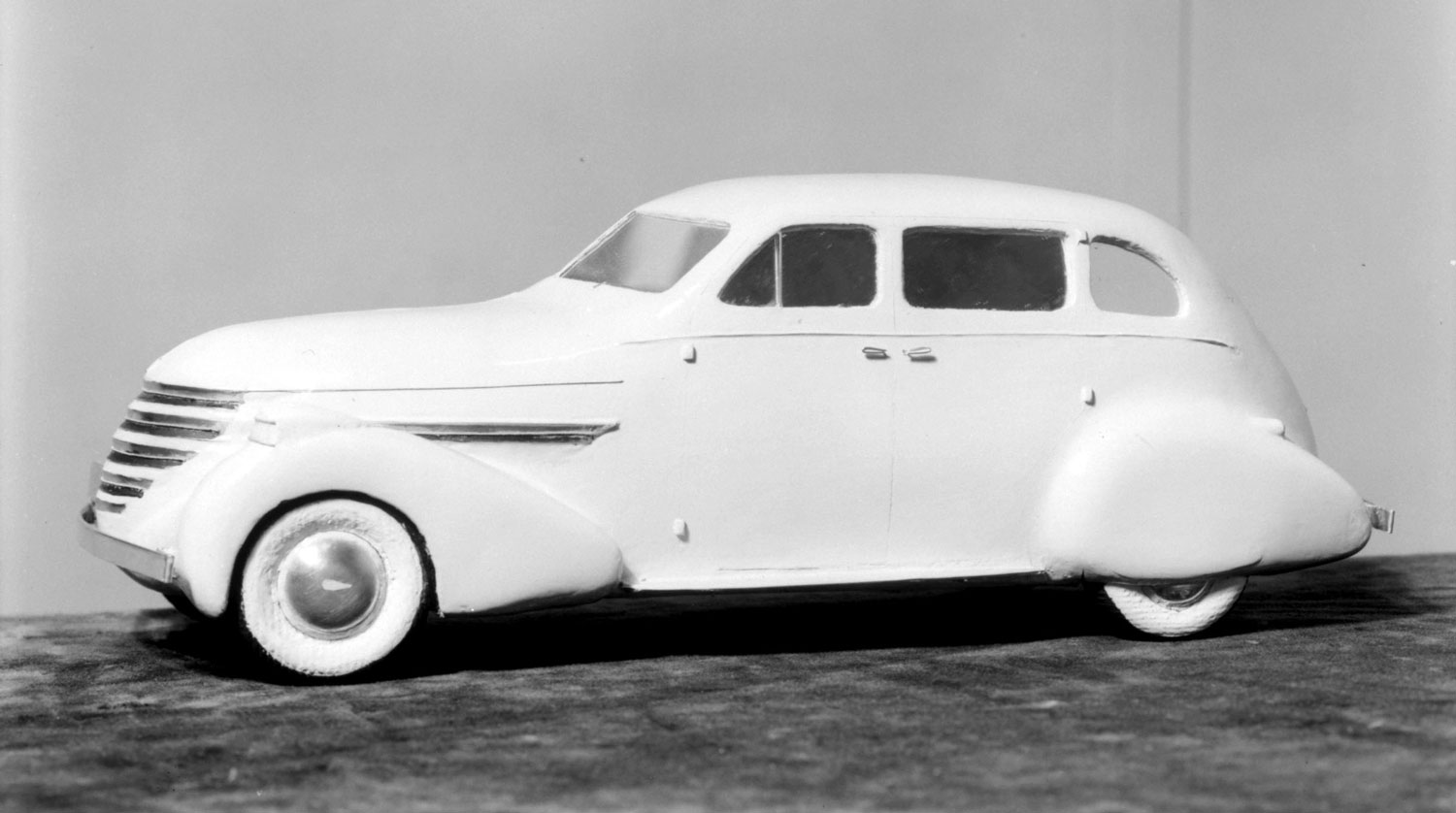
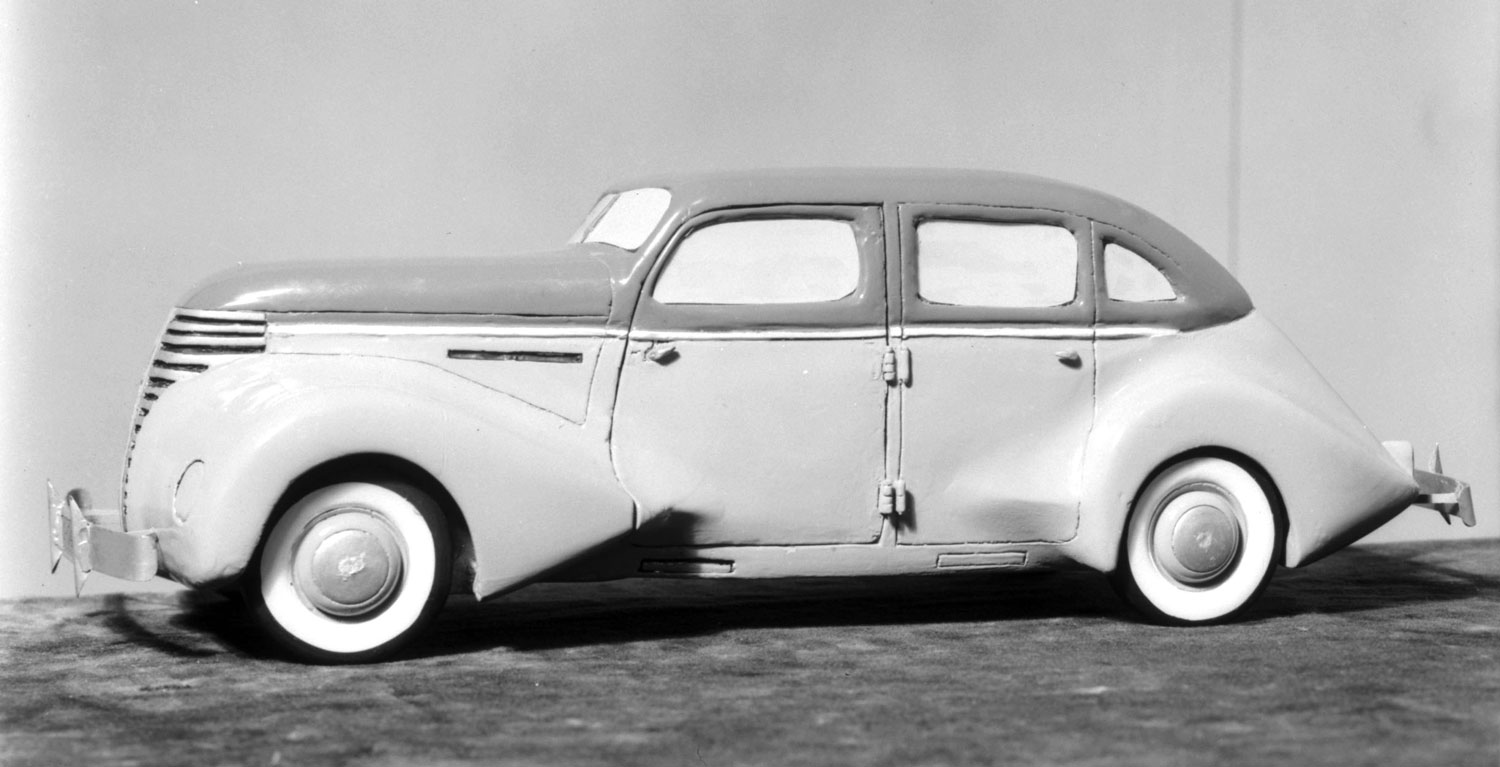
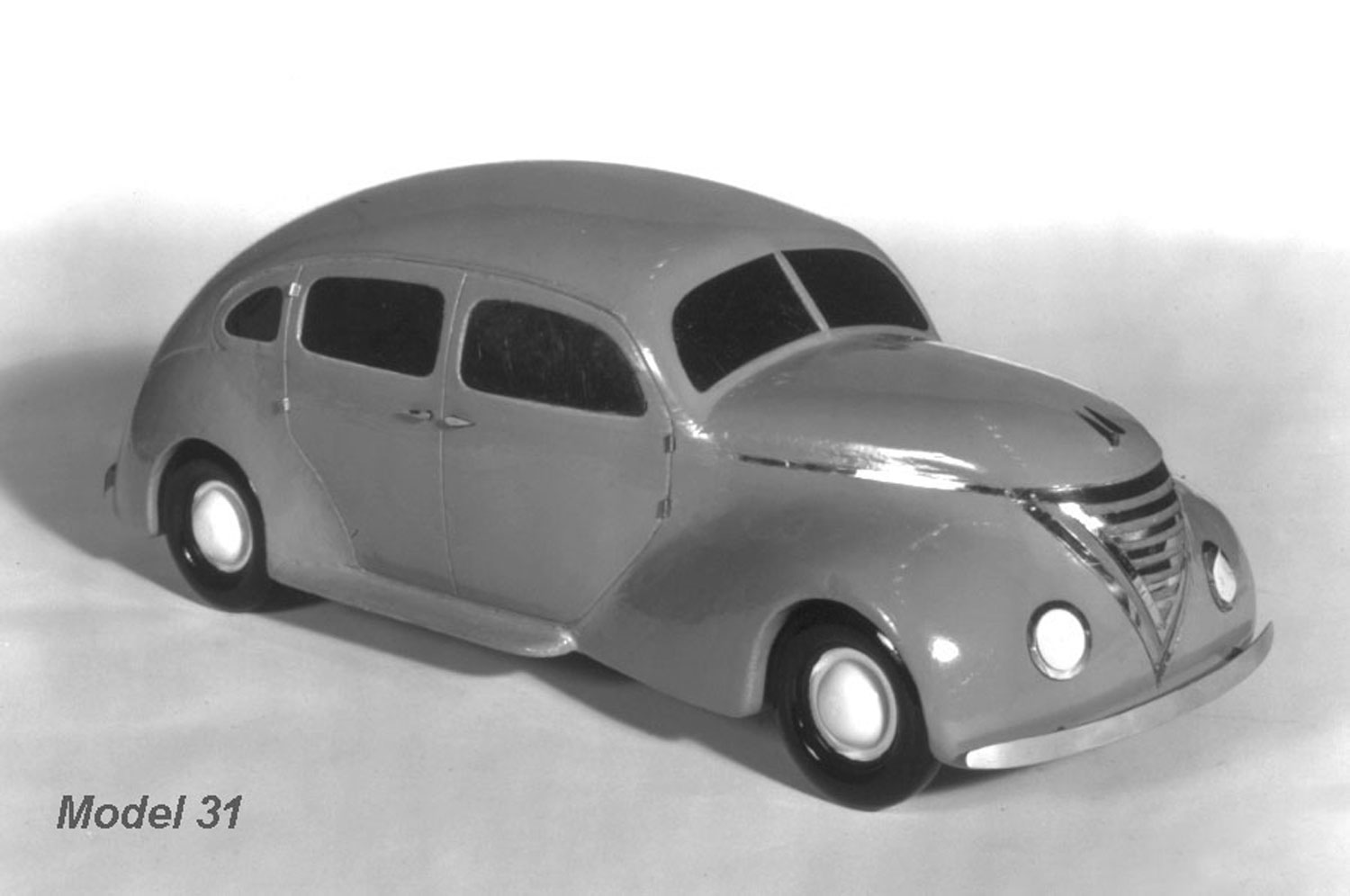
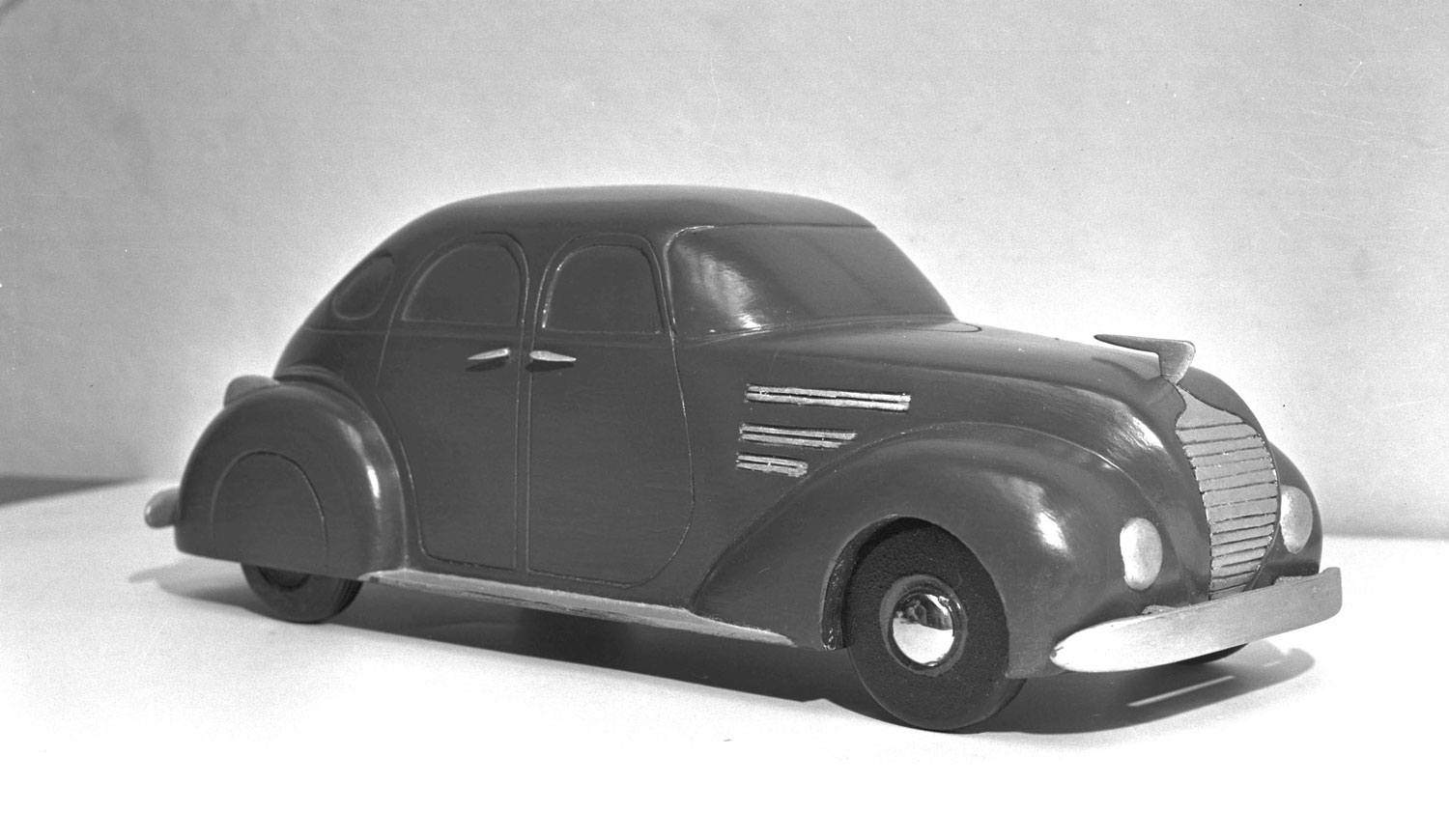
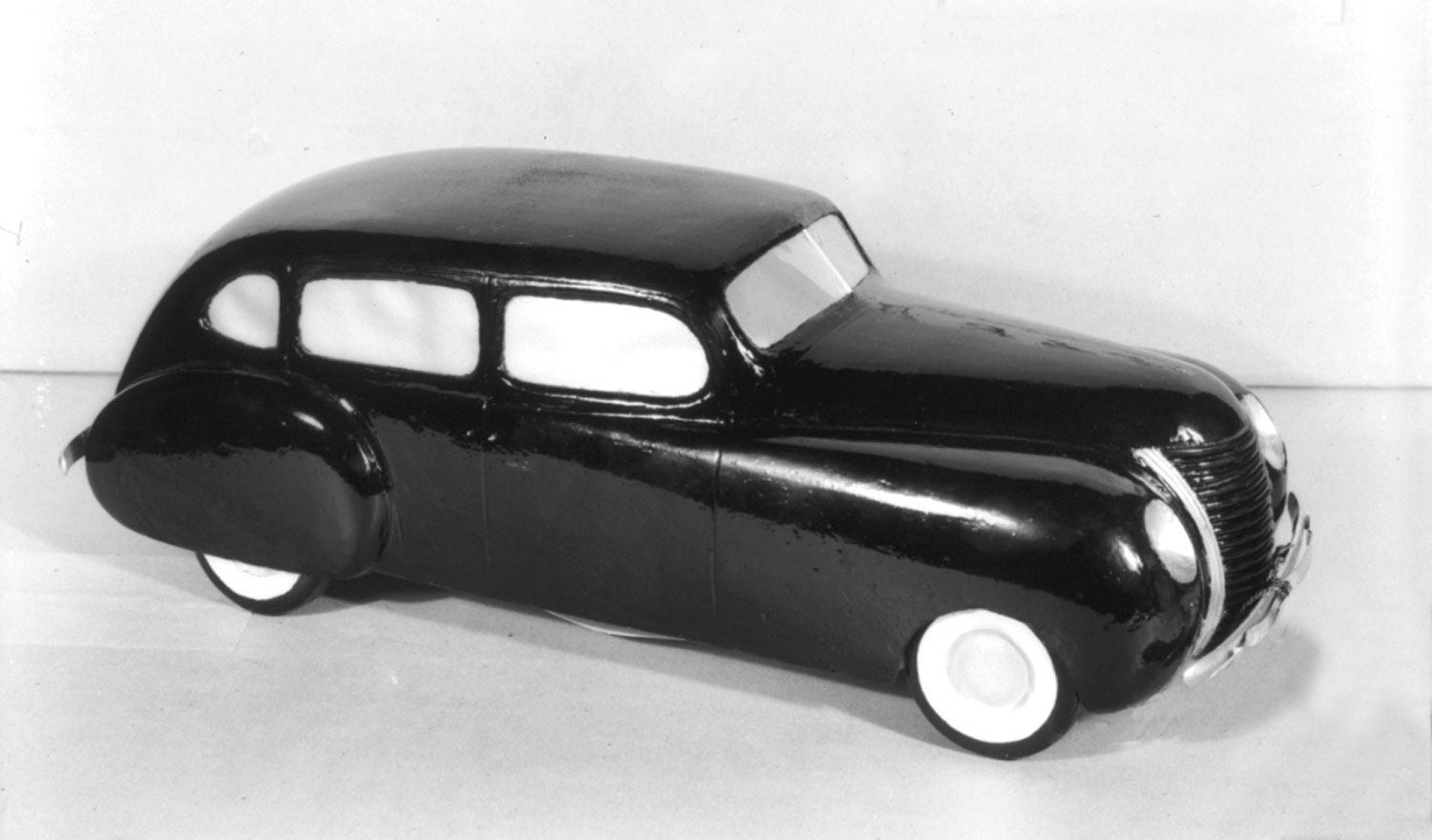
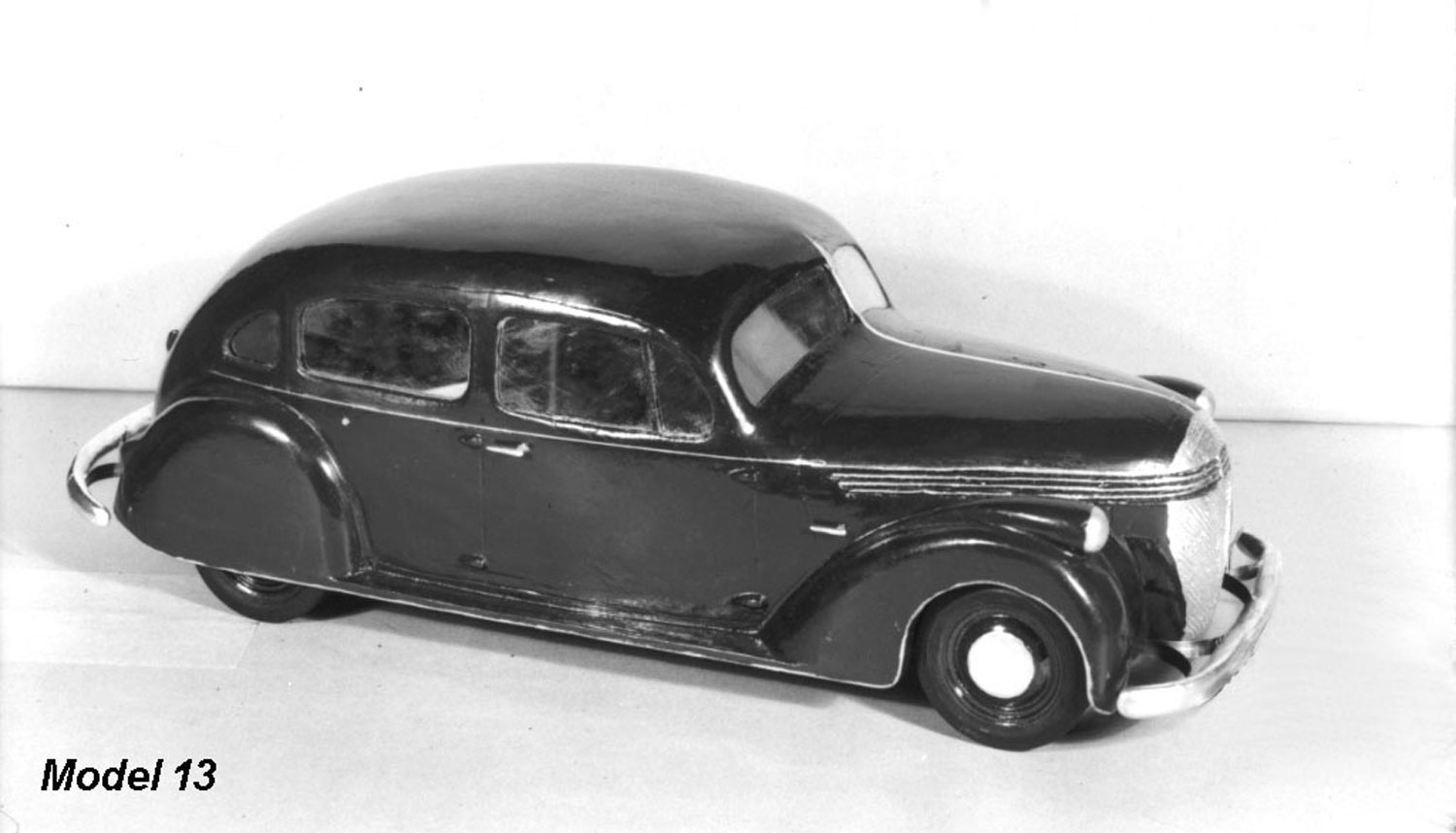
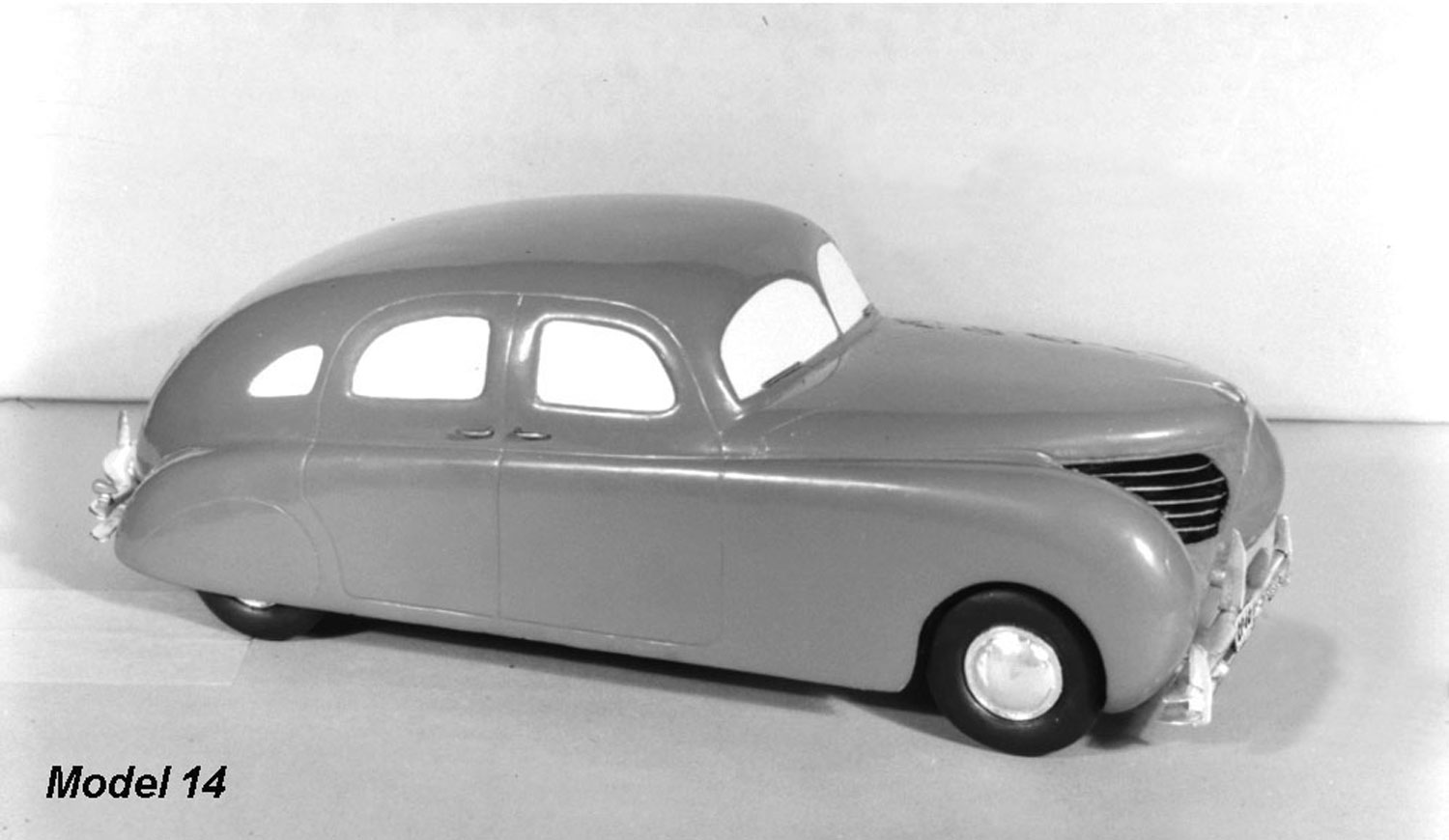
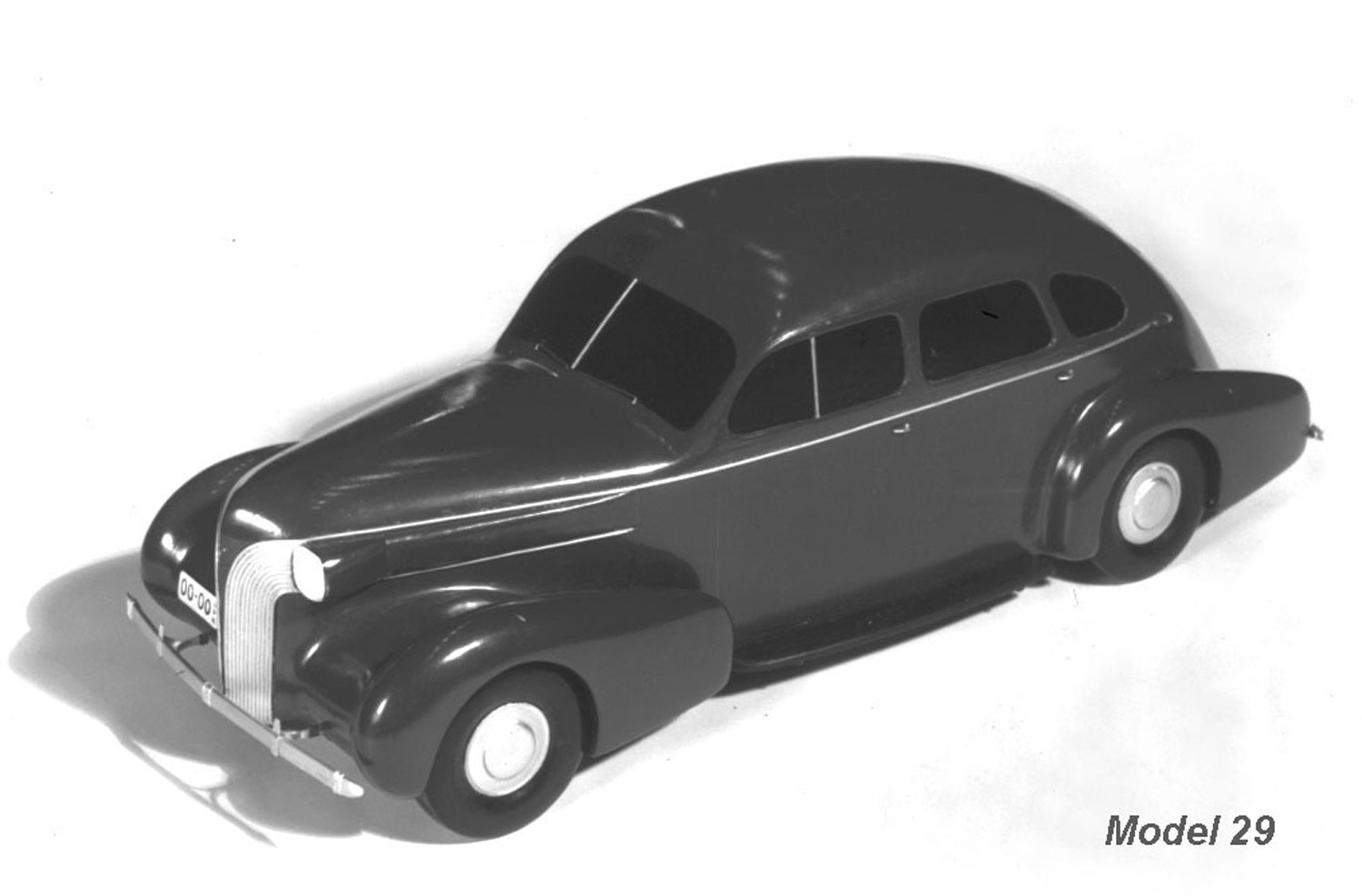
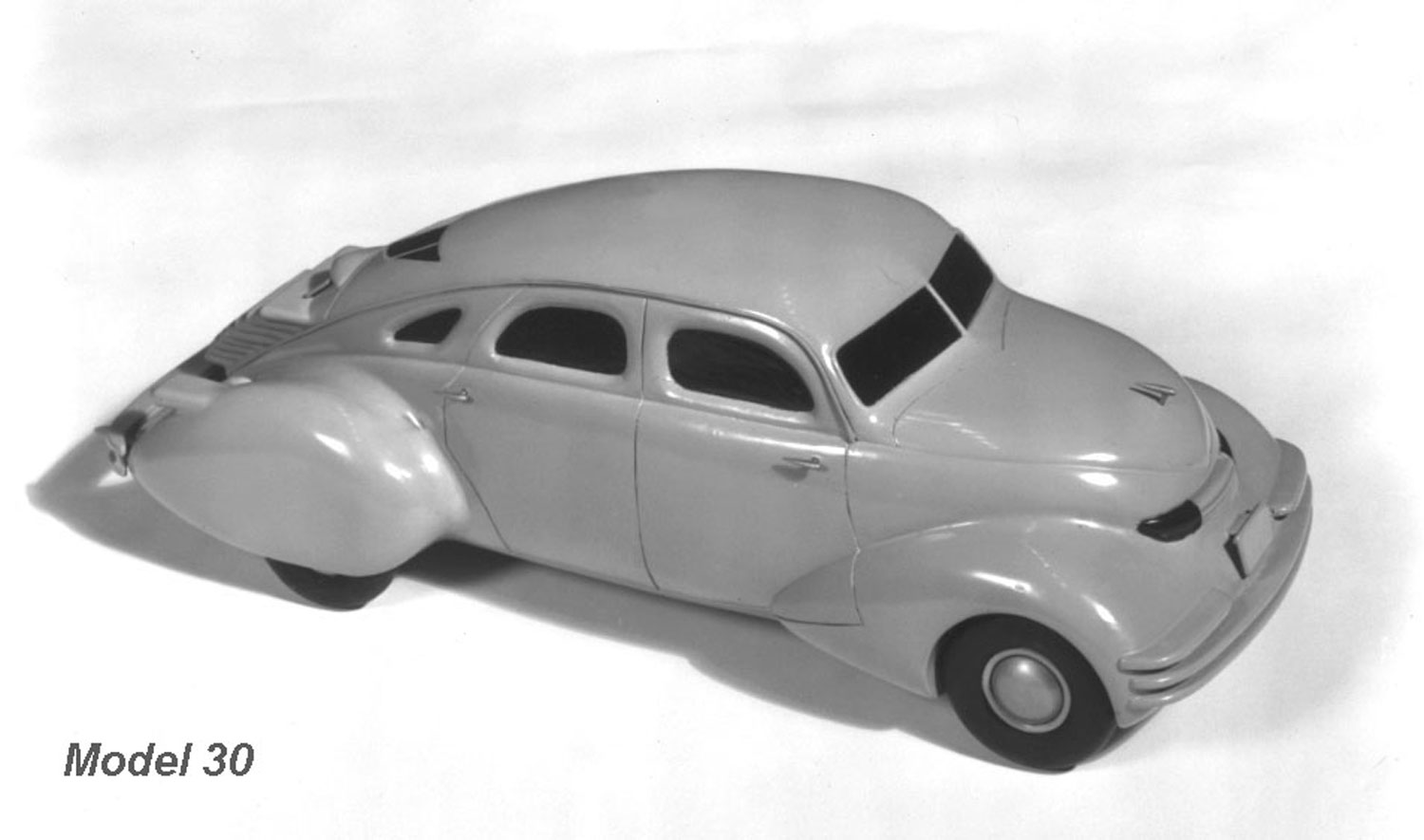
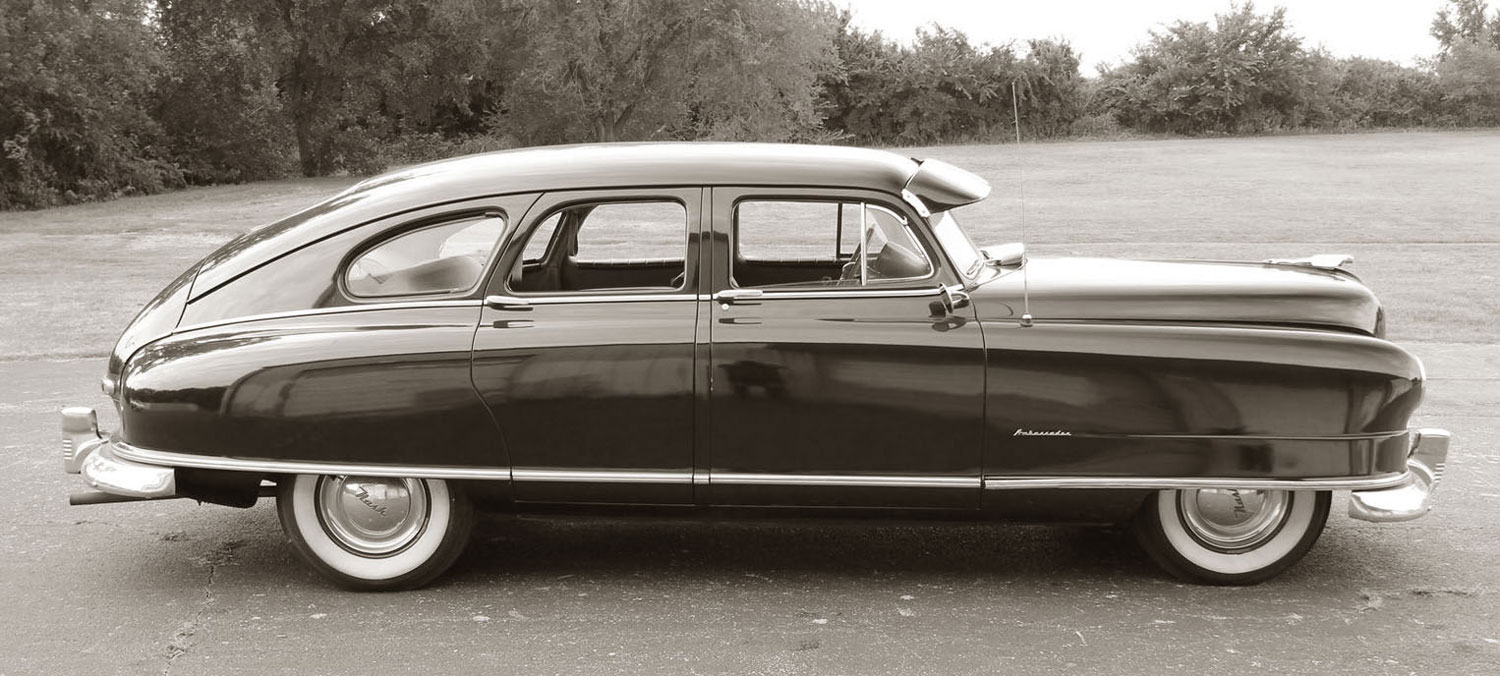
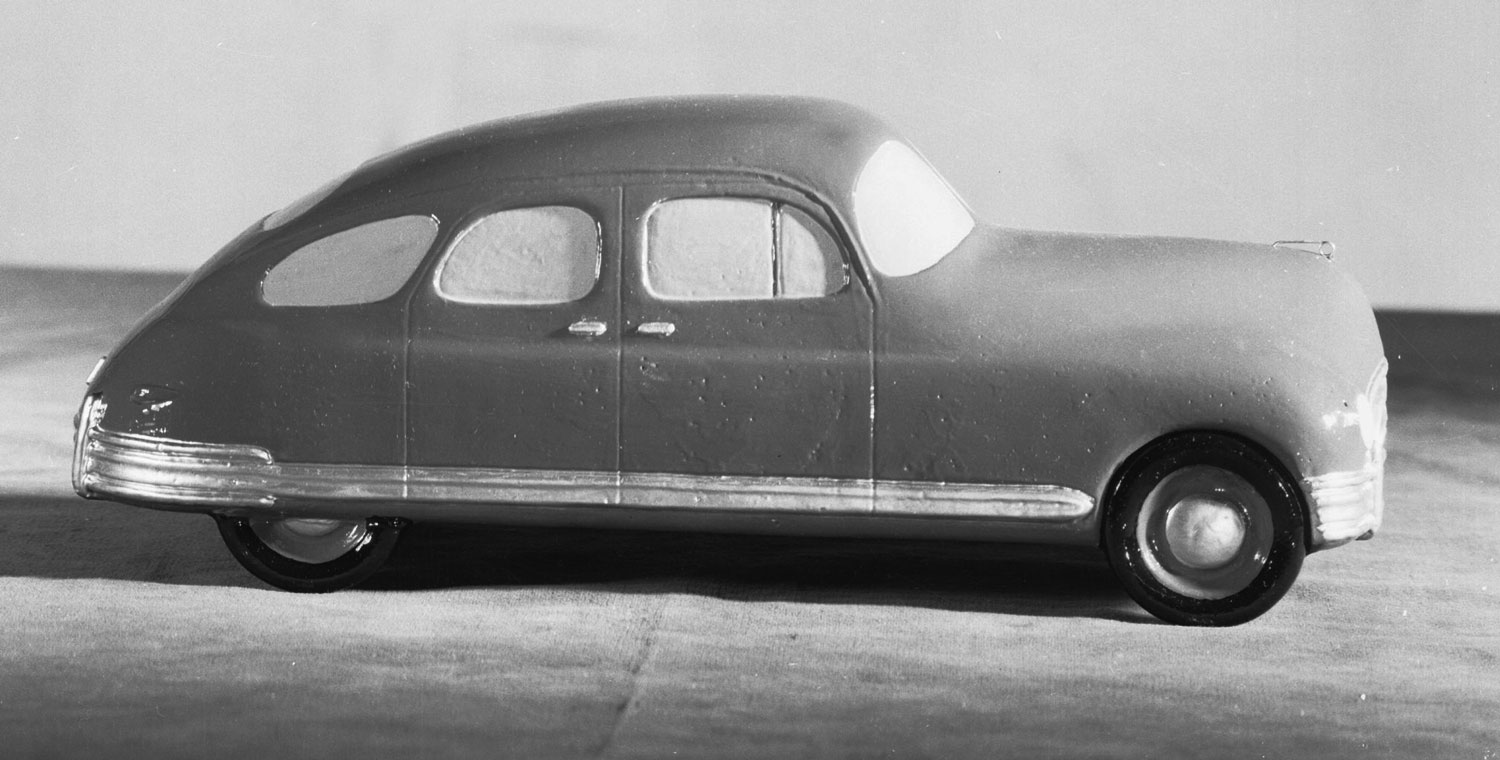
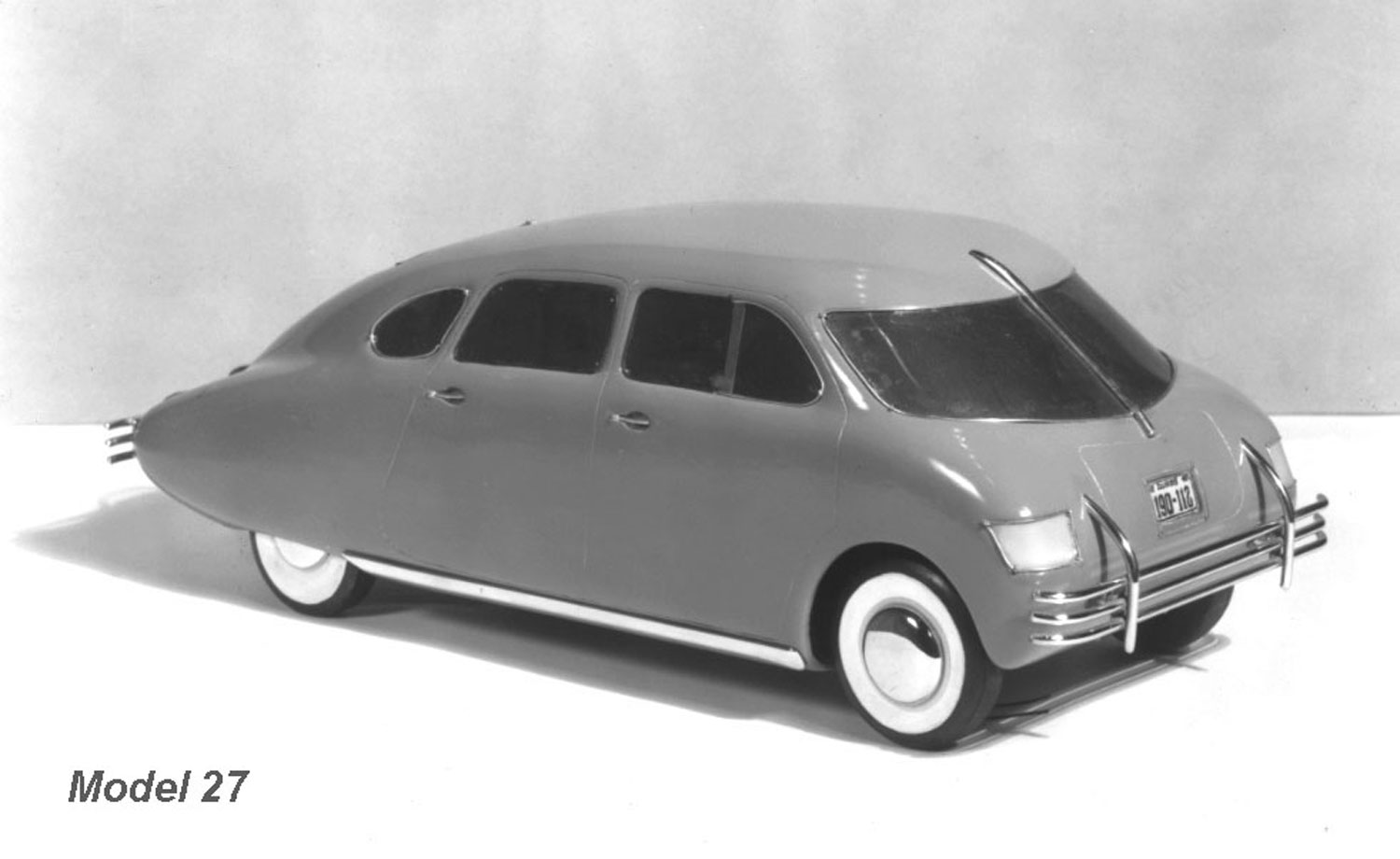
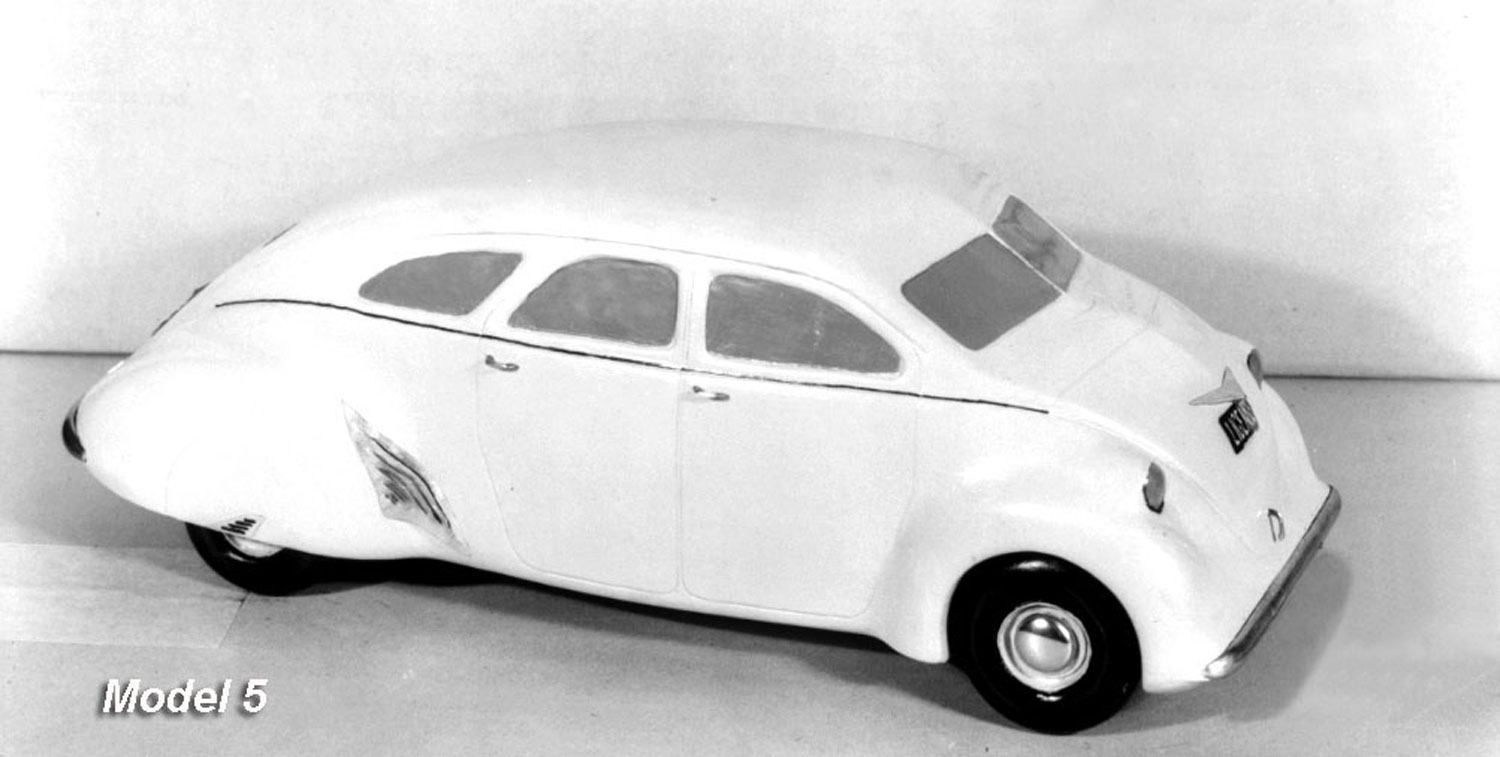
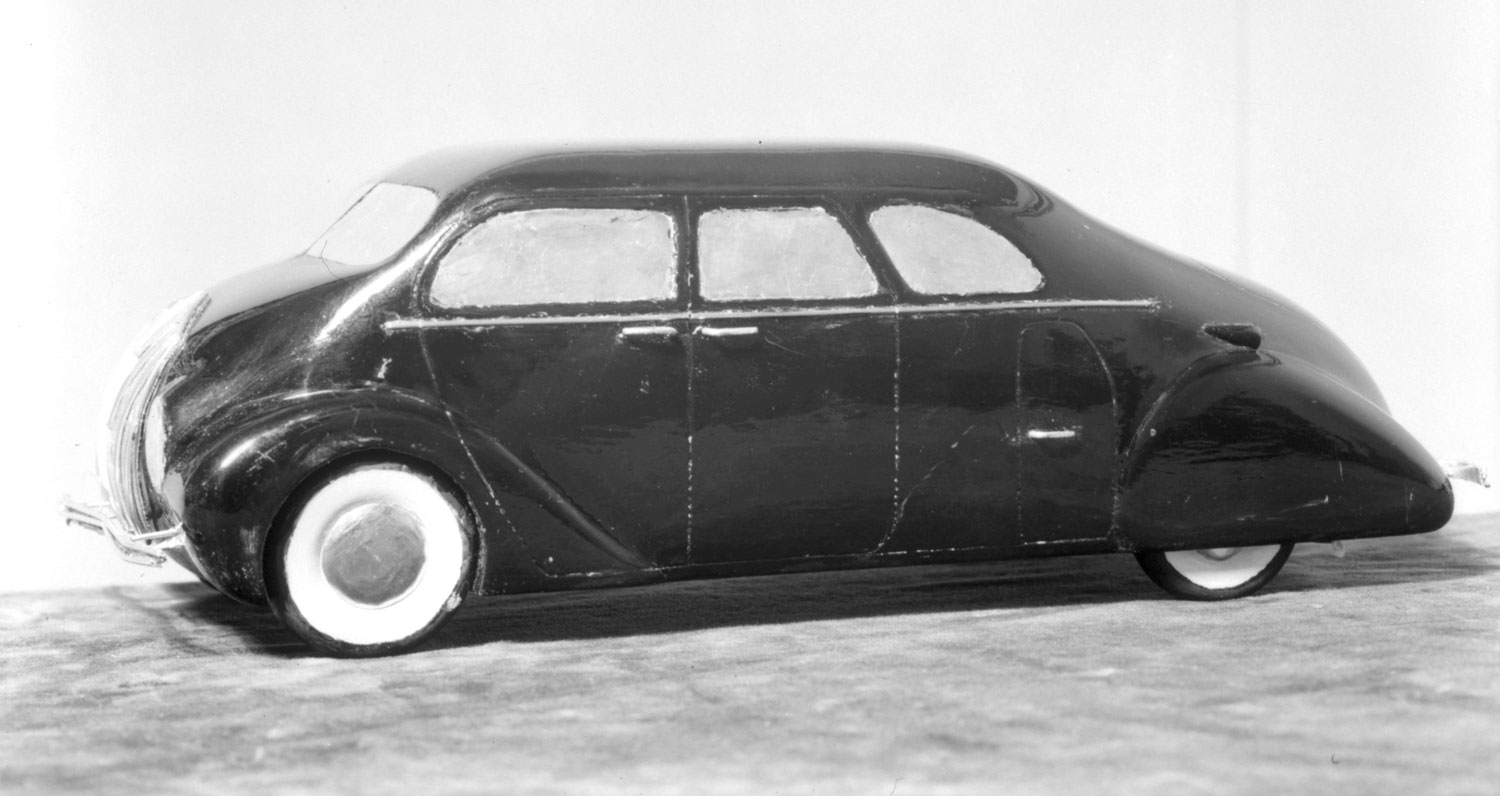
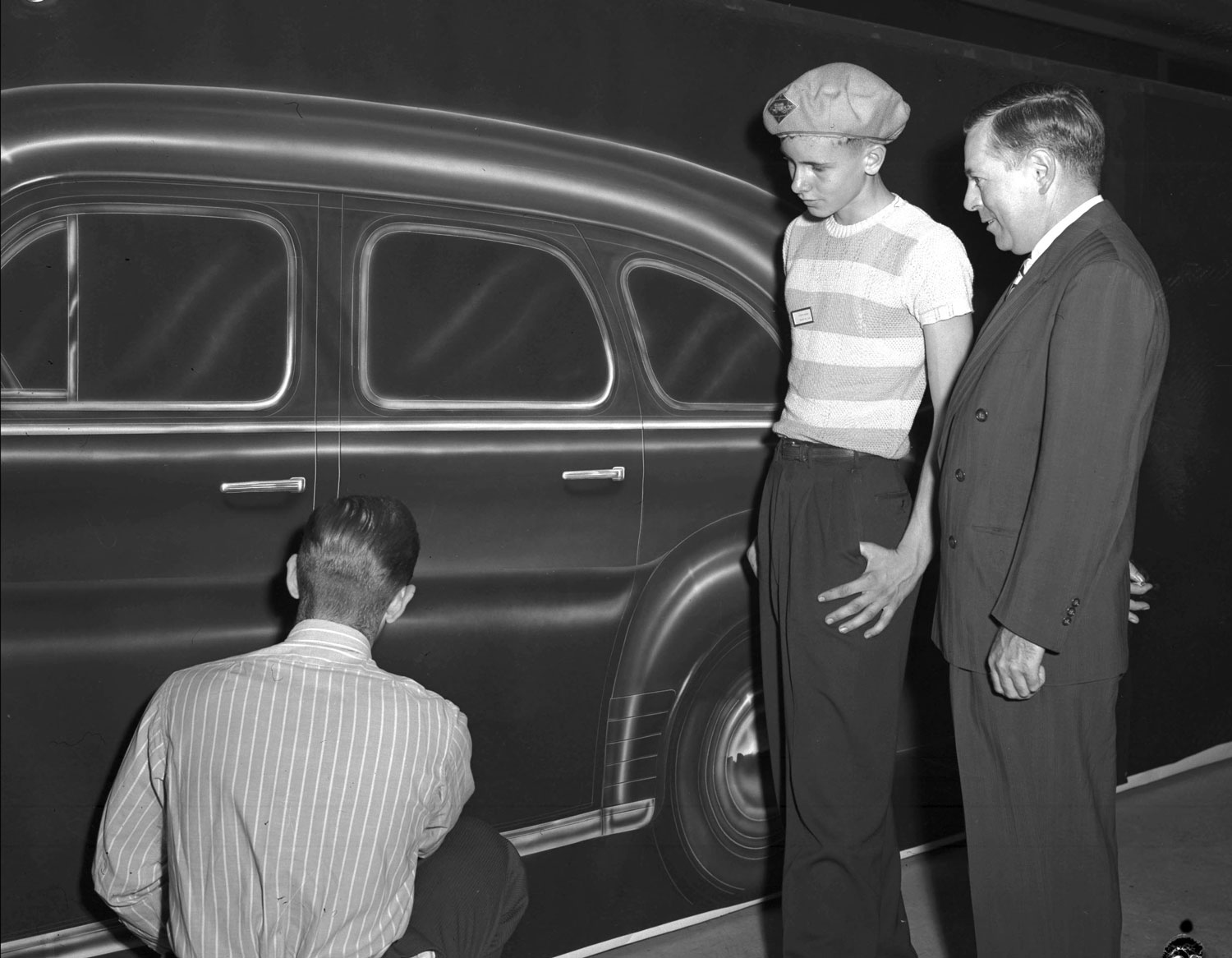
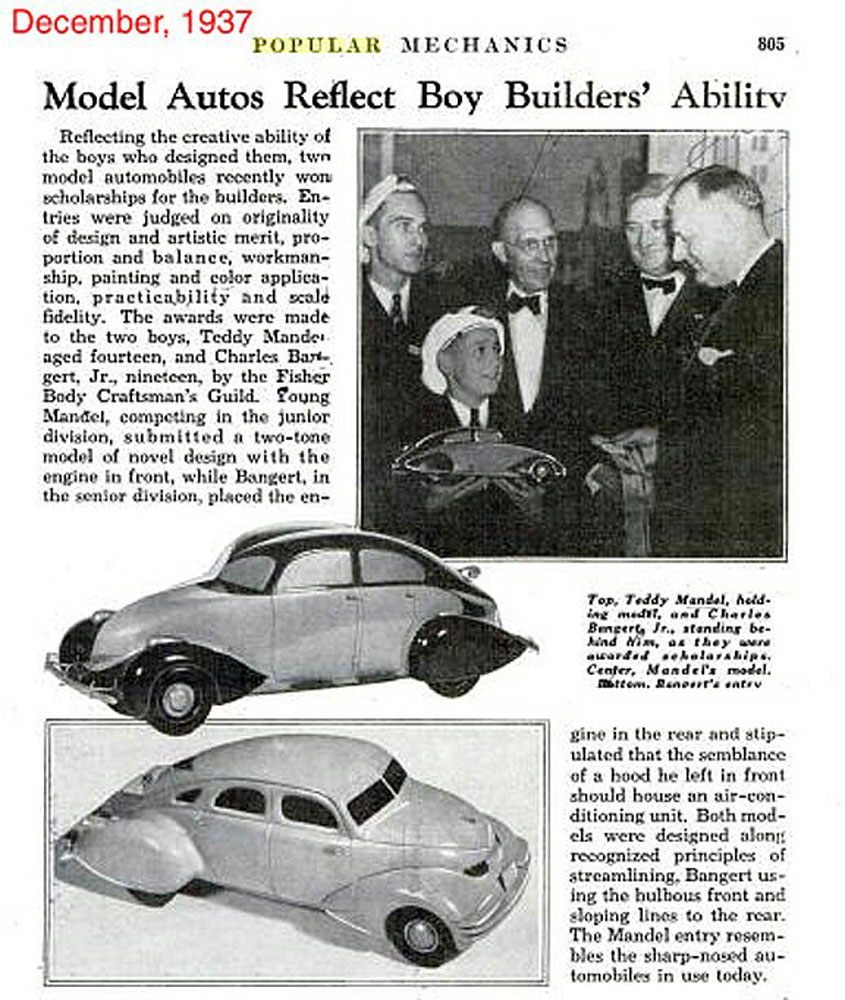
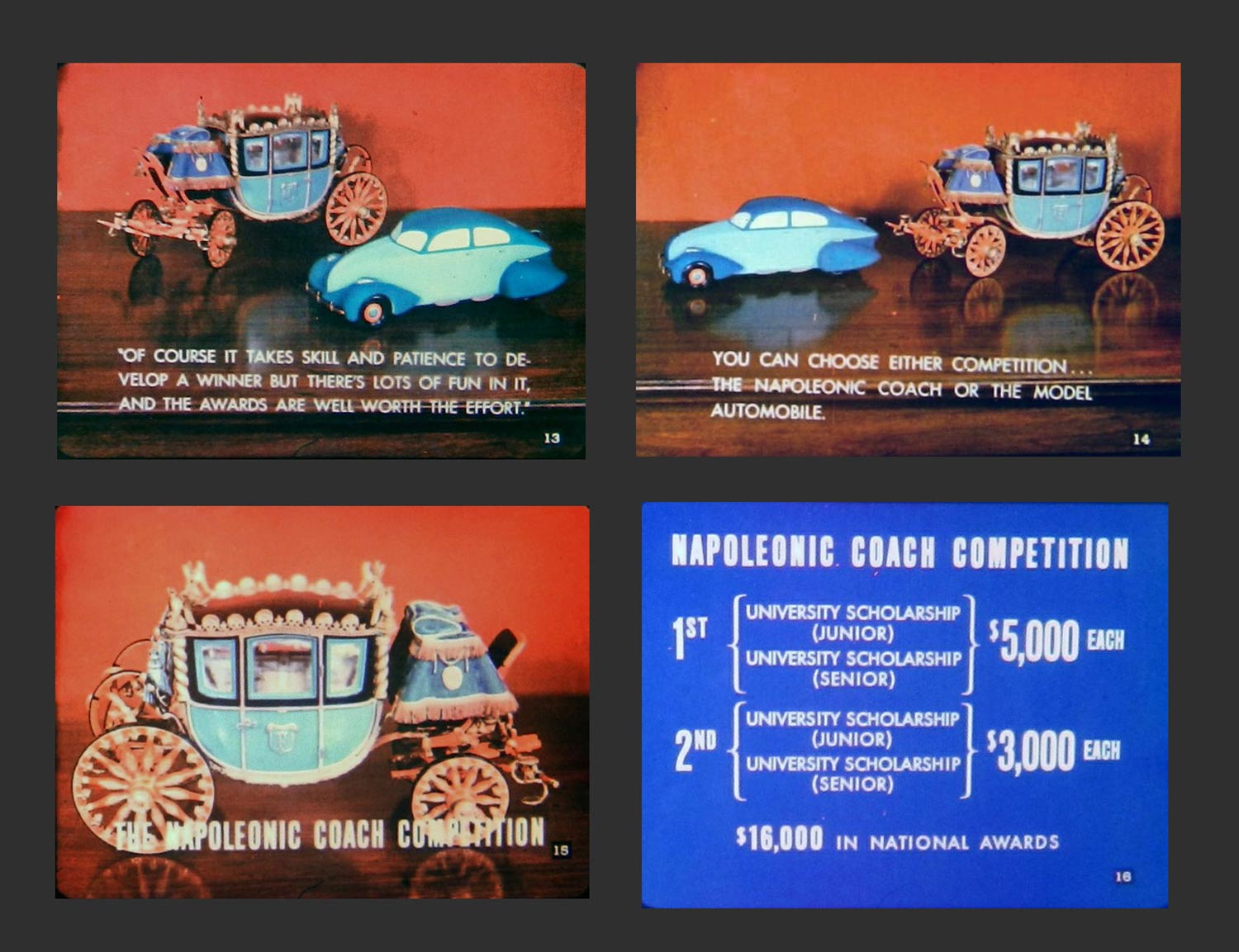
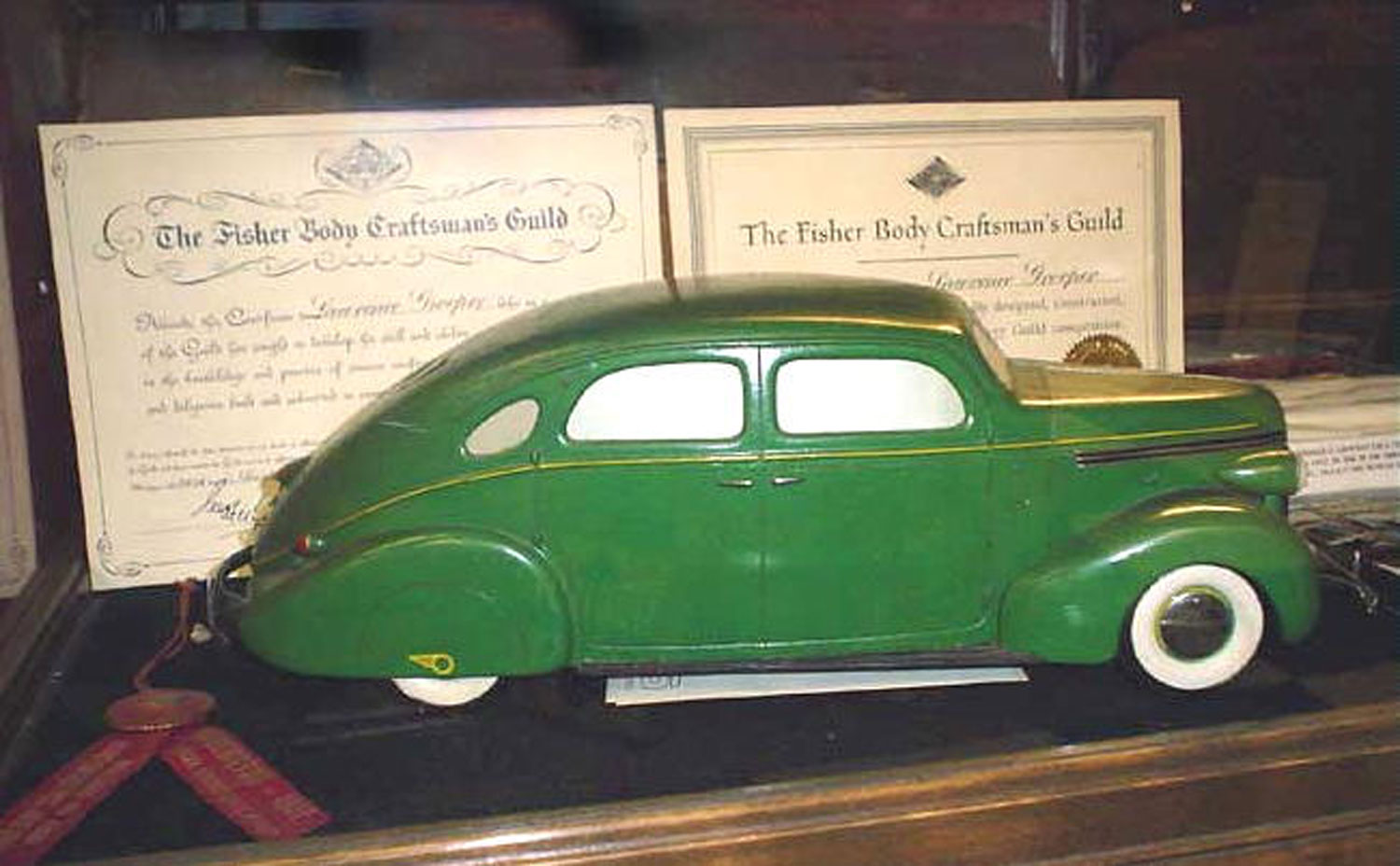
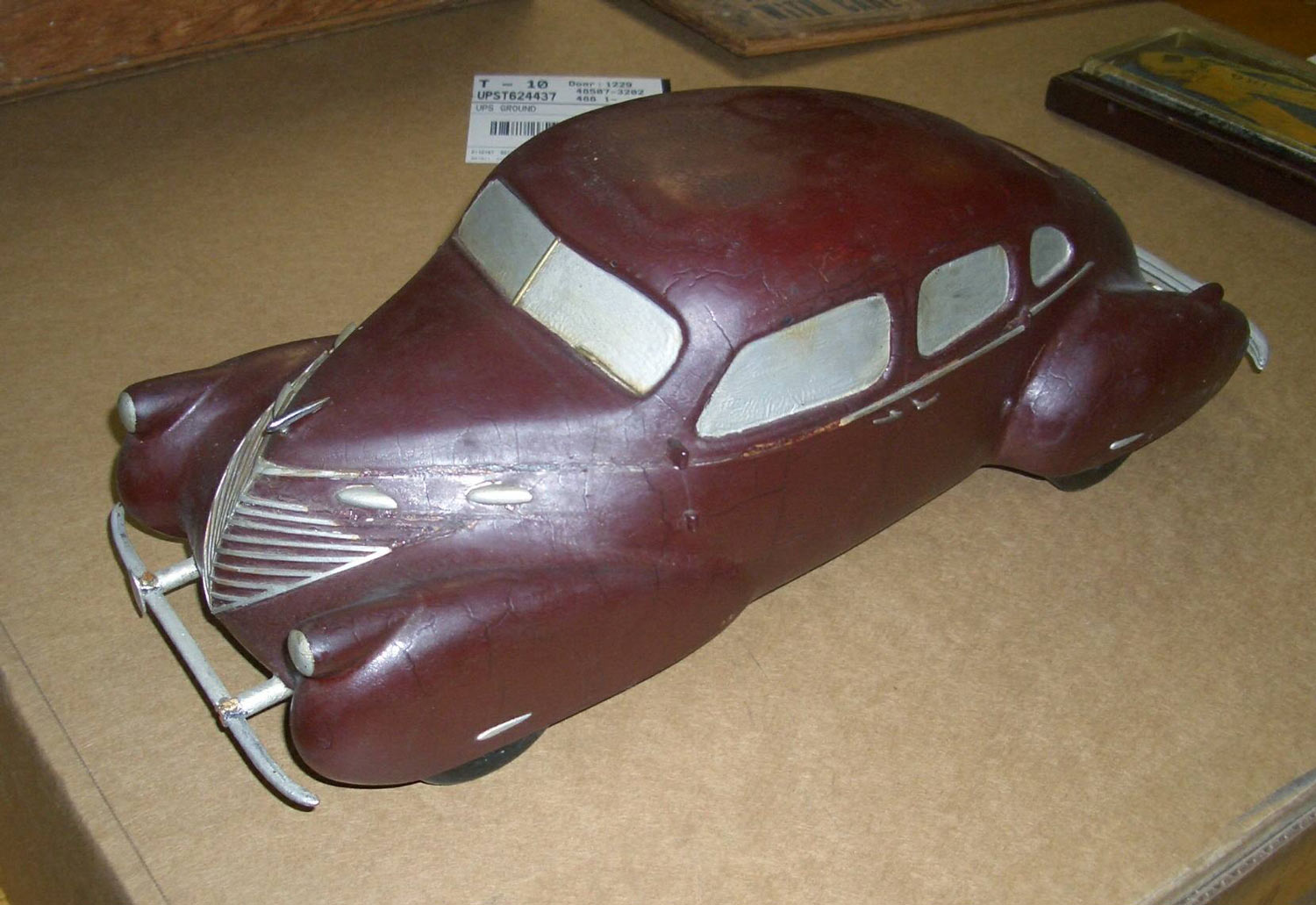
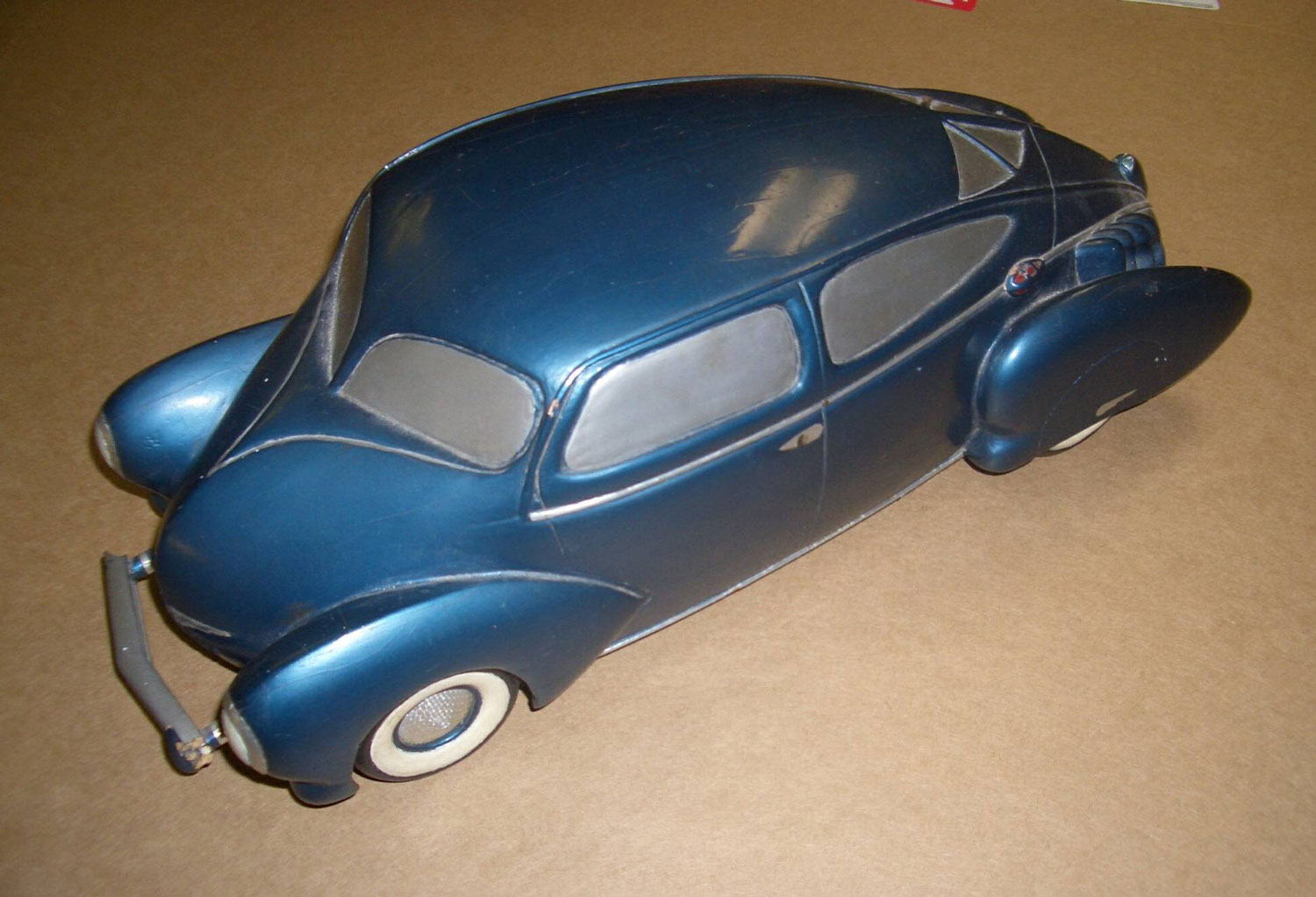
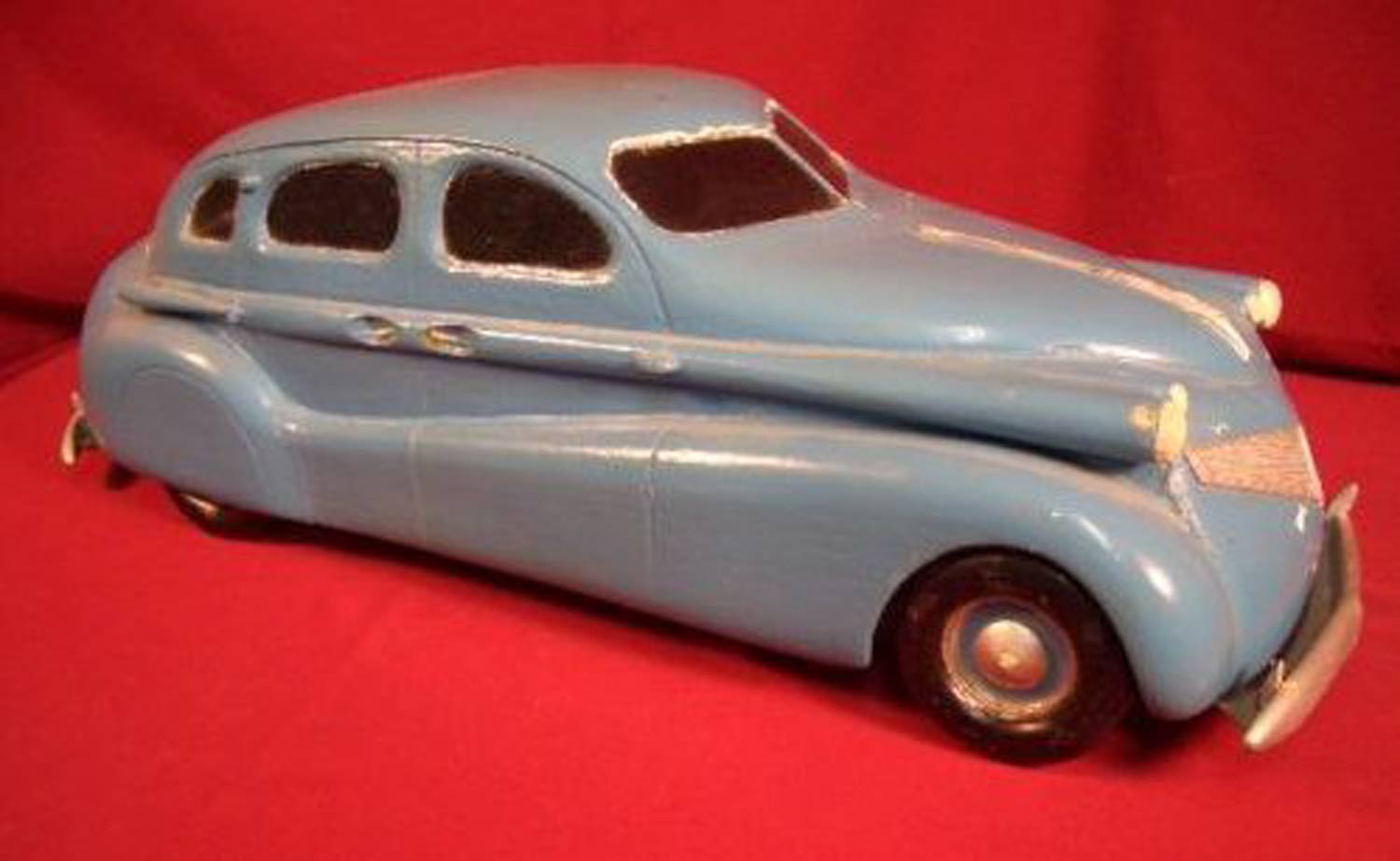
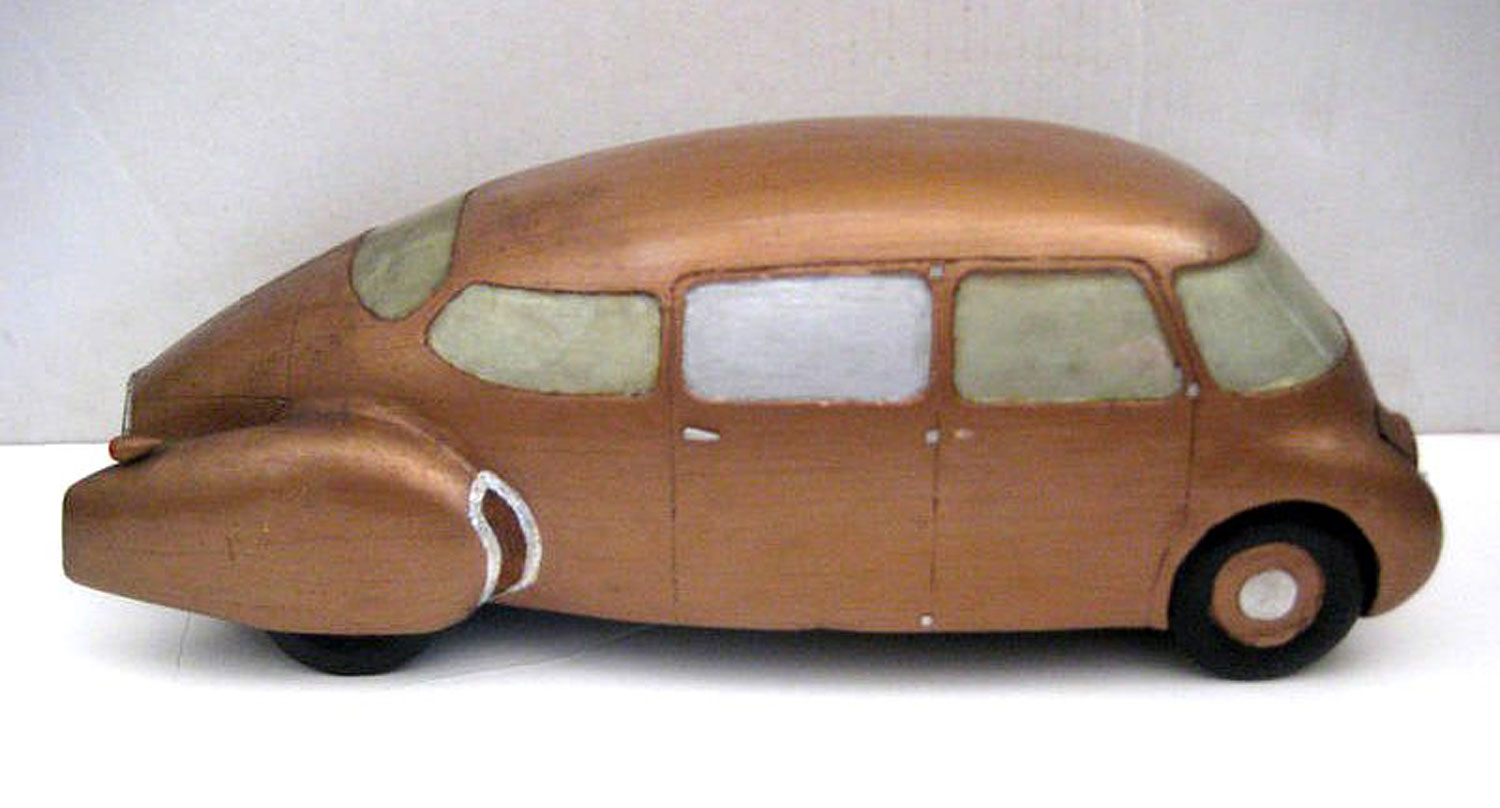
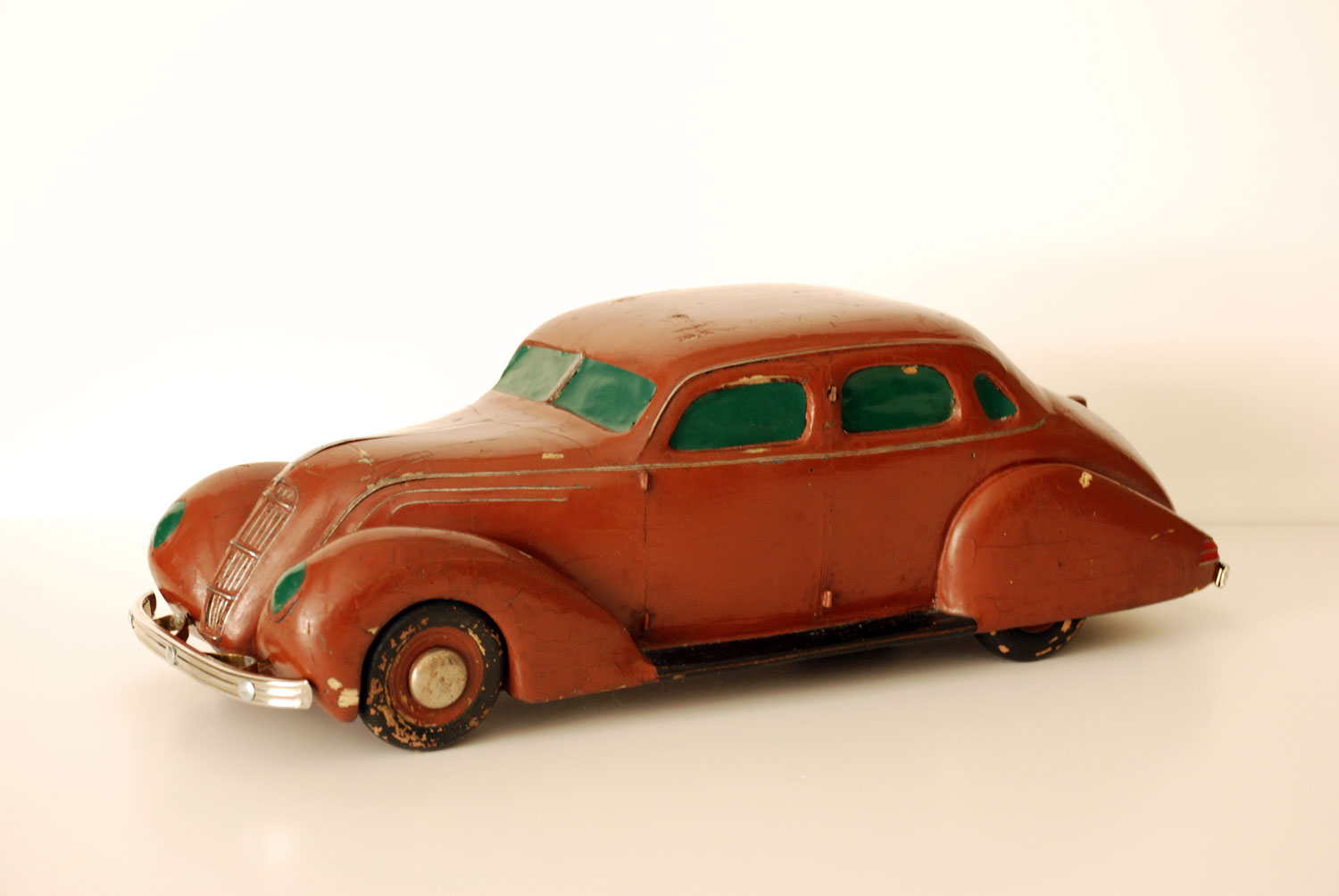
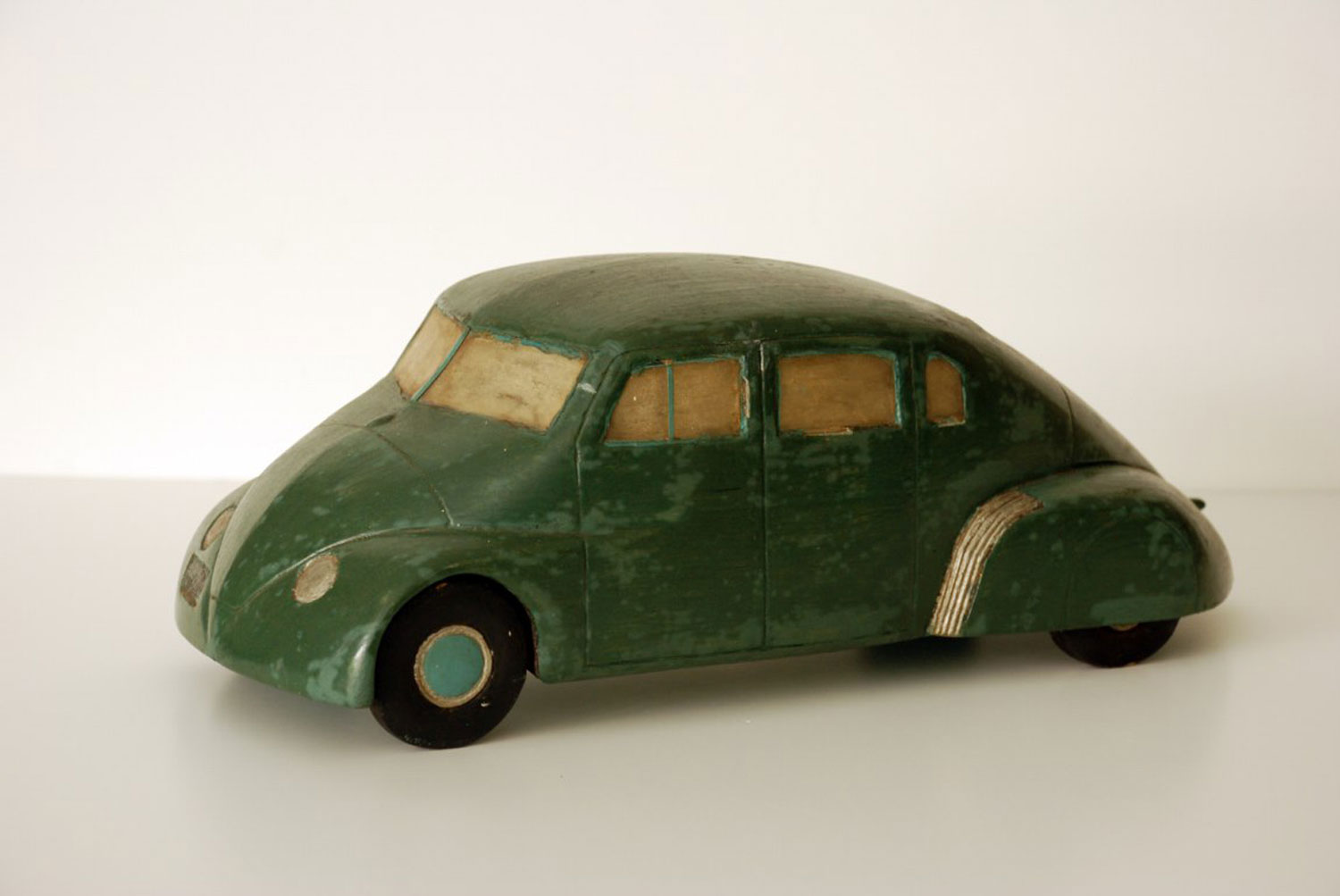
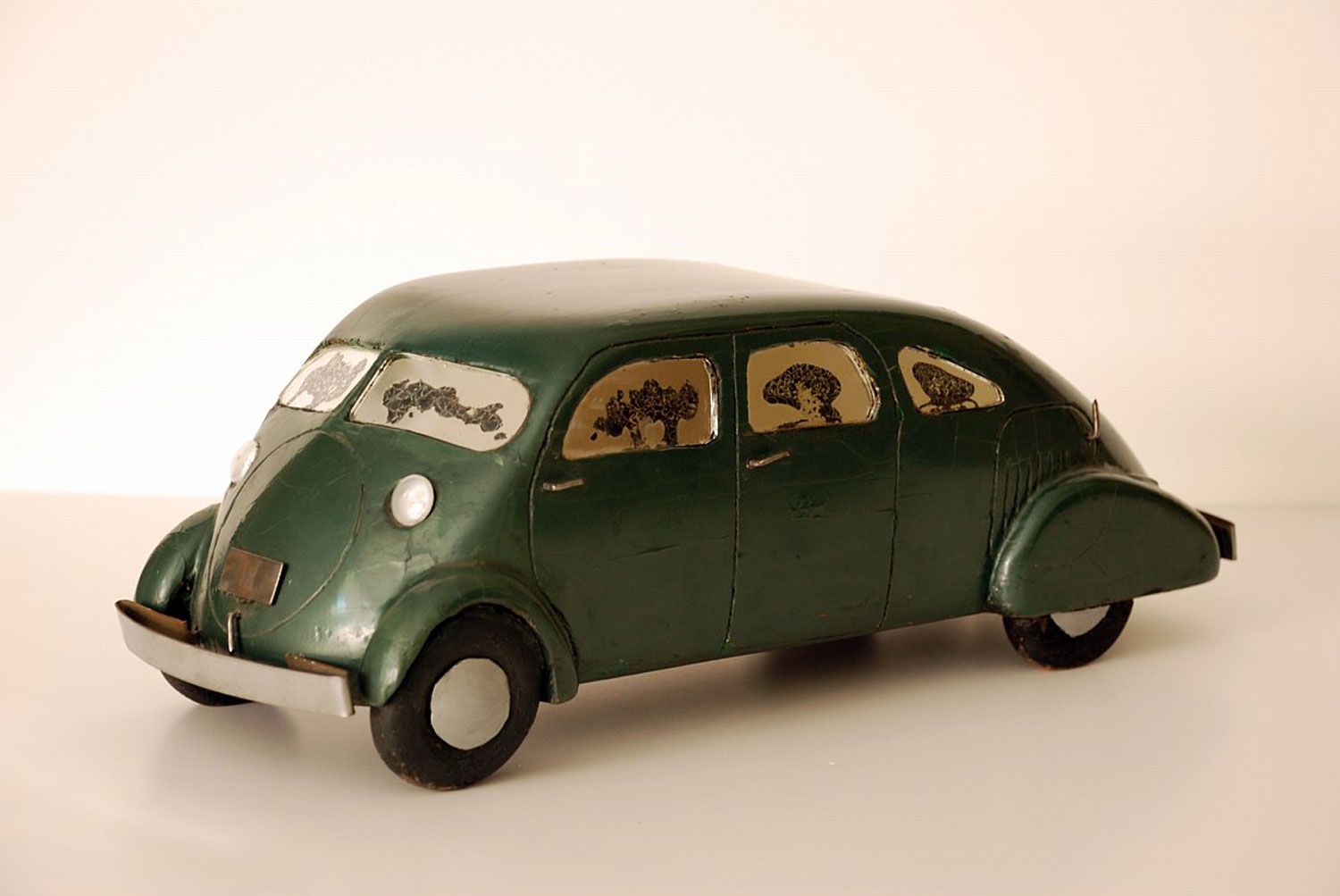
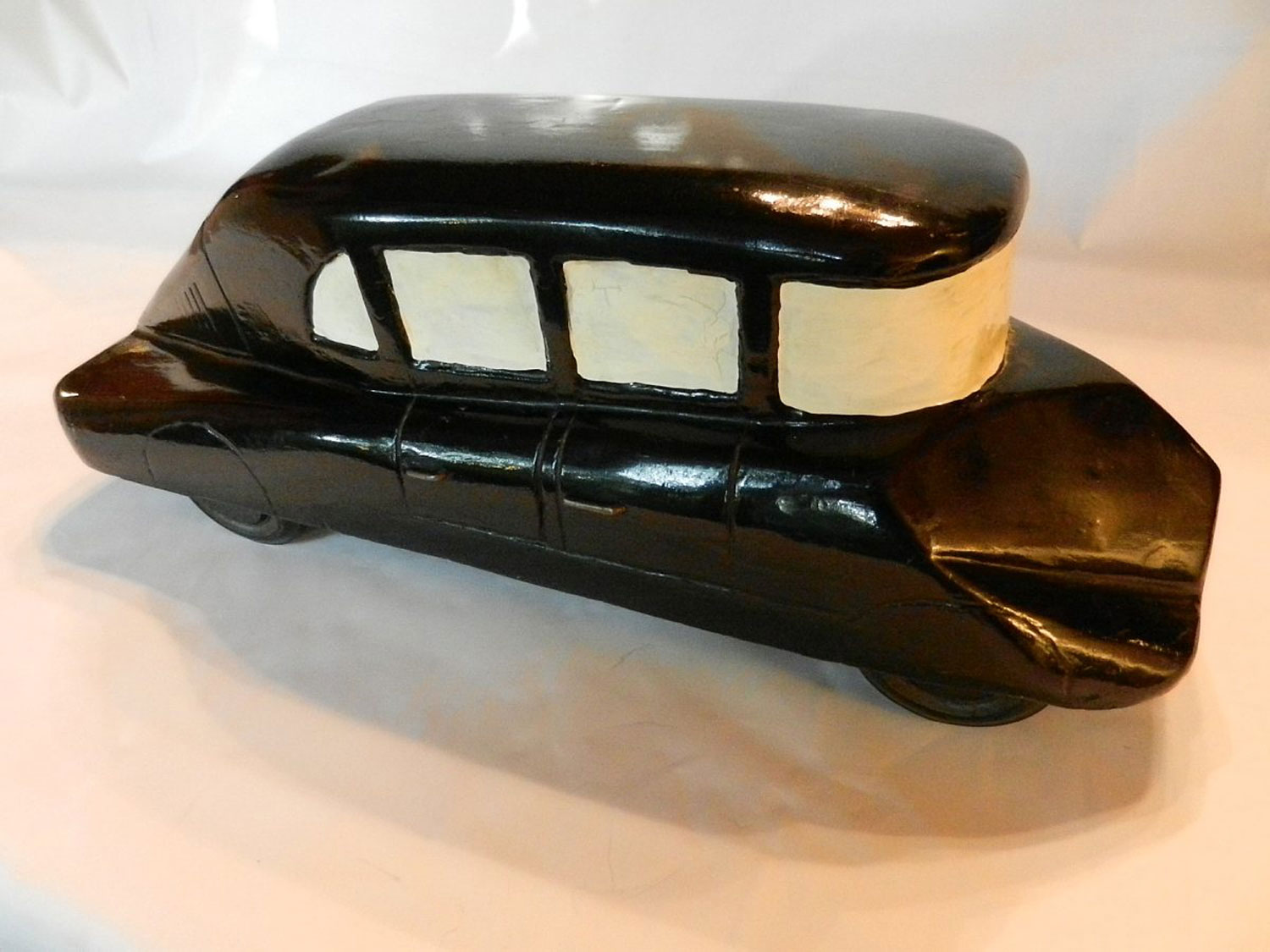
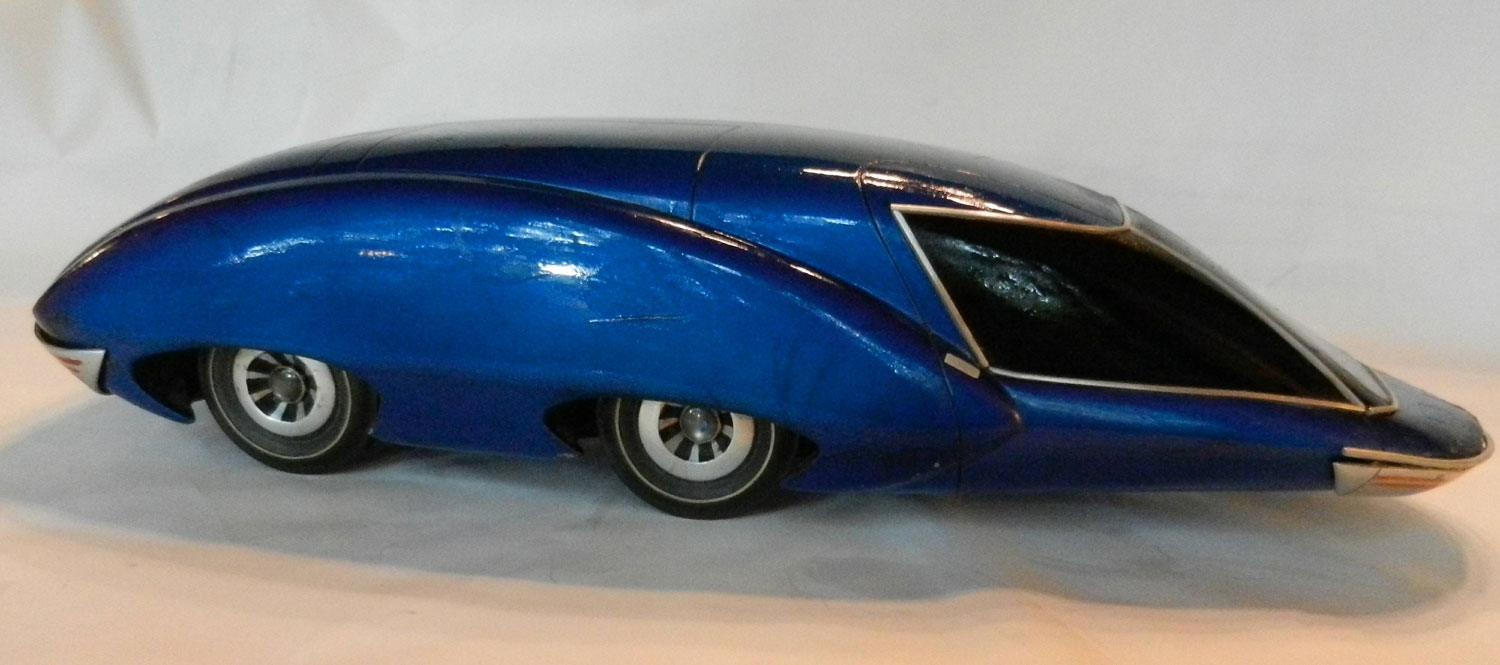
Model in the fifth photo bears a striking resemblance to the McQuay-Norris teardrop streamliners. I think the young fellow wearing the beret in the large photo with the rendering on the wall might be Virgil Exner, Jr. He participated in the competition in 1947.
At the Gilmore Museum in Hickory Corners, they had the largest gathering of FBCG models since the contest ended. Retired GM designer Paul Tatseos, put this event together in 2019.
Jay Sowers of PA, found and saved, the oldest car there, built by Calvin Leib, that was a regional winner in PA.
I have photos, but not sure if they can be uploaded here… Could not, arghh!
John & Jean Jacobus of Silver Spring, Maryland 209 authored 2 Fisher Body Craftsman Guild books, which are still available.
What a great program that was. I suppose it was born out of the lack of qualified help that existed as automobile design was a brand new profession.
Many great designers came out of it to the benefit of the entire industry.
I was asked to judge it once shortly after being hired. It was in the Park Hotel, near where the old CCS Campus is now. So much fun to see tham.
My Father, Chief Designer of Pontiac Styling at the time, was the first judge of the first F.B.C.G. car design competition and was sent by Harley Earl to Dallas Texas to judge that area’s 1937 final. He and my mother loved the trip and brought back to me (4 yrs. old at the time) a beautiful cowboy hat, spurred boots, a wonderful die cast six shooter with a gunbelt holster. They greatly enjoyed the trip. My father was 28 at the time.
I won first place in the Junior division in 1946 at age 13, the youngest ever winner. Of course, I pursued my father’s career. I will e-mail pictures and write-ups directly to
Gary Smith.
Great article Ron. It is a wonderful overview of the oldies but goodies!!
Thanks Ron.
Very enjoyable article.
Bobby D’ Mura from Gary, IN was the 1933 First State winner in the Napoleonic Coach competition and his sons, Michael R. (Bobby) and John M., won national Guild awards in the model car competition in 1962 and 1964, respectively. Michael R. won a 1962 Styling Scholarship ($1000) and John M. a 1964 national scholarship ($4,000). Both were from Flagstaff AZ. Also, their cousin Joesph Wayne D’Mura of East Gary, IN won a national scholarship ($2,000) in the 1966 model car competition. It is interesting to note that the famous Industrial Designer Richard Arbib was the first state NY winner ($100 award) in the model car competition while at Pratt Institute.
CORRECTION The famous Industrial Designer Richard Arbib was the first state NY award winner ($100 award) in the 1937 model car competition while at Pratt Institute.
I have seen many coaches from the 1930s through my involvement with the FBCG and on occasion some car concept models from these early years. Through your research, you have done an excellent job putting together a nice photo collection of models showing a young man’s idea of what car design would look like in the late 1930s including period photos of these guildsmen. Due to my work schedule I won’t be able to attend the FBCG display in Dayton, Ohio this year-I understand you will be putting together a slide show on this very subject. I hope to see this some day-thanks for doing this research!
Your marvelous story of the 1937 Fisher Body Craftsman’s Guild was inspiring.
Studying these photographs clearly indicates the creative thinking when there were no prior years to base their effort.
I became aware of the contest at age fifteen when listening to the 1950 radio broadcast of the scholarship award banquet.
Had I known the contest origin and the models, would have been a foothold to ease my first attempt.
Ron, thank you for creating this article.
I arranged for the FBCG coach, my stepdad built in 1934, to go to the Gilmore show. He was always very proud of it, all of his life, despite not winning anything. I was so pleased to see it preserved in public.
I have photos of all of the models and displays, from the Gilmore show, on a DVD if DG wants them. Email me at OldCarMan@comcast.net Thx.
Wow, what a great history lesson of the FBCG. To bad that it ended. Just think what it be like with today’s technology and media’s to work in.
I’m very excited by this post as I have a direct connection to the 1937 Contest. I hope that a photo of my grandfather’s car is among those that GM still has. If so, I would like to know how to get a copy.
https://share.icloud.com/photos/01eijQjtaCLmk580Wj06p72RA
My grandfather, Russell Dougherty, competed in the 1937 contest. His entry won 2nd place for the state of Oklahoma – Senior Division. I got his model after my father passed away and refurbished it. You can see pictures of the refurbishment in the link I’ve provided. He turned 19 in August of ‘37 and submitted his model before the deadline of July 1. Sadly, he was killed in World War II. But the model, which went to the exhibit in Detroit remained in my great grandmother’s possession. Apparently, it was damaged in the return shipping but my grat grandmother wanted to display it. So, she had my aunt paint it blue. Even though it was originally green. Also my great grandmother thought the chrome trim that Russell painted by hand was a mistake in judgment. So that was painted over. When I restored it, I made sure to include it. I also painted the car a green that I believe is fairly close to the original. My intent was not to replicate exactly what he did but to execute my understanding of his design as best I could with modern techniques and materials. If he were to see it, he would immediately recognize at his.
The “1931 winning coach” model depicted above by Paul Rafter from Missouri is not a 1931 winning coach model. The caption under the photo is totally incorrect. The model shown in the photo is actually a smaller scale model of the Napoleonic coach and it is a commercial model that was issued to celebrate the 75th Anniversary of Fisher Body. The smaller model is actually made of wood, metal and plastic and it was manufactured by Gull Incorportated, 25 South 300 East, Slt Lake City, Utah. The original selling price in 1984 was $225, which included the display case. The caption under the photo should be changed to reflect the correct information concerning the model shown in the photo.